SI2







Dr. Manoj Varghese, Ph.D
Managing Editor

Sarath Shyam
Consultant Editors
Dr. John Andrews
Anuja Mulmule Emma James Andrew Scott Suchita Gonsalves
Free Subscription www.cxooutlook.com



Americas



Editorial Enquiry: admin@cxooutlook.com
Creative Consultants

Charlie Jameson Manjunath R Louis Bernard

Naomi Wilson Stanly Lui Roshni Rajagopal Sruthi P S Keith Alexander Ajay Das Rohith Poojary Shirley David
Branding & Marketing Partnerships
Jennifer Anderson Monica Davis Suchita Seth Siva Kumar Jessica Edword
Rachel Roy Priyanka Pandewar Anna Elza Stephen Donnell Cathy Chen
Partnerships Enquiry: admin@cxooutlook.com
Connecta Global LLC 16192 Coastal Highway, Lewes, DE 19958, USA Europe Connecta Global Ltd. 27, Old Gloucester Street, London, WC1N 3AX, UK
Middle East & Africa
Focus Innovation Technologies FZE P.O. Box 48299, Dubai Silicon Oasis, Dubai, UAE Asia-Pacific Connecta Innovation Pvt. Ltd. Ramanashree Arcade, 18 MG Road, Bangalore – 560001, India
CXO Outlook is a digital magazine published by Connecta Innovation Private Limited. All rights reserved. The opinions expressed in the content and pictures provided are those of the authors. They do not purport to reflect the opinions or views of the Connecta Innovation Private Limited or any of its members and we do not assume any responsibility. The publisher does not assume any responsibility for the advertisements, its content, pictures, and all representation of warranties made in such advertisements are those of the advertisers and not of the publisher. CXO Outlook is a Free Subscription digital magazine strictly not for sale and has to be strictly for internal private use only. Publisher does not assume any responsibility arising out of anyone printing copy of this digital magazine in any format and in any country and all matters related to that.

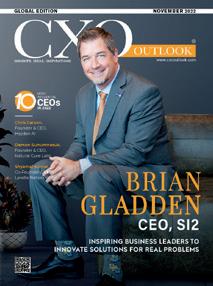

Who is the more successful and influential leader? Bezos, Musk or Zuckerberg? Or are there lesser-known CEOs finding new paths and creating phenomenal results for their businesses? Be it well-known or unknown, being a CEO is a daunting task. In a turbulent world like today’s, with wars and pandemics, it is challenging to balance the needs of multiple parties: stakeholders, employees, investors and greater society. No wonder the average time as CEO of a Fortune 500 company has come down to 6.9 years from 9.7 years in 2013.
On the other hand, the likes of Warren Buffett, Bill Gates, and Steve Jobs - the longest-serving CEOs - have apparently remained in their roles for an average of 33 years. Indeed, the world remembers them as some of the most influential leaders. A study by James M. Citrin, Claudius A. Hildebrand, and Robert J. Stark, named The CEO Life Cycle, says that the most successful years for CEOs are between 10 –15 years. They call it the Golden Years, during which a CEO’s long-term commitment and ability to reinvent the company are coming to fruition. Unfortunately, most CEOs
would drop out of the race before they reach their Golden Years, whether for performance, health, or personal reasons. Ultimately, it is the strongest stays and creates history.

In this issue, we celebrate the success of CEOs worldwide by featuring the 10 Most Influential CEOs in 2022. Our team of experts has handpicked the best-performing leaders who have exceeded the broad expectations of directors, shareholders, customers, and employees. On the cover, we feature Brian Gladden, CEO of SI2, a seasoned corporate innovator, Blue Ocean strategist, and business model expert. He has over 30 years of consulting/sales experience with start-ups and Fortune 500 firms such as Verizon, Sprint, Intel, Cisco, and CGI. We hope our stories inspire the next generation of CEOs aspiring to make successful global organisations. Enjoy Reading.
Sarath Shyam


38
Chris Carson, Founder & CEO, Hayden AI A Seasoned Technopreneur, Driving Growth Through Innovation
66

Shyamal Kumar, Co-Founder & CEO, Lavelle Networks

Empowering Enterprises with the Next Generation of SD-WAN Technology
54


Damon Sununtnasuk, Founder & CEO, Natural Cure Labs
Supporting Your Wellness Journey
48
Finding Tech Talent by Challenging Traditional Thinking
Nick Suwyn, Founder & CEO, Promineo Tech

Is Privacy the Turning Point to Build Trusted Relationship in Digital Age?
Kohei Kurihara, Co-Founder, Privacy by Design Lab
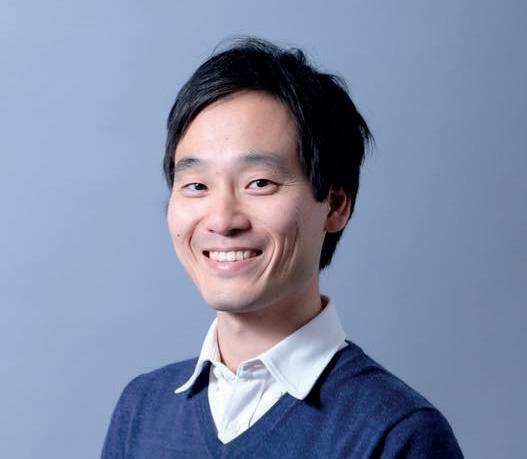
Role of Data Science in Vertical Farming
Prejith P Pillai, CEO & Founder, Xploro Technologies Inc

Making the Best of AI – What Executives Need to Know
Seth Earley, CEO & Founder, Earley Information Science
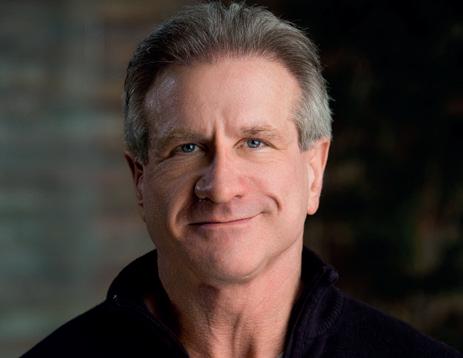
Helping Entrepreneurs Build Successful Businesses
Luisa Ferrario, Founder, Elle Effe Consulting Ltd.


An Entrepreneur Revolutionises the Hamper & Food Basket Industry
Renée Benatar, Founder & Creator, Hampers Bazaar
 Seth Earley, CEO & Founder, Earley Information Science
Seth Earley, CEO & Founder, Earley Information Science
Beginning the journey with the right preparation will lead to success instead of disappointment
For many enterprises, some AI capabilities are moving into core operations. However, other enterprises are still early in the journey or are seeking out applications that will provide meaningful, measurable returns. Still others are just scratching the surface with initial capabilities but realize that they have far
to go in order to truly build competitive advantage.
The usual traps to new technology are out in force – over hyped capabilities, aspirational functionality, and unrealistic expectations. On the business side, enterprises face the pitfalls that any technology adoption is susceptible to – insufficient resourcing, unclear objectives or scope, lack of business justification, and insufficient supporting processes, among others.
AI is a tool in your toolkit, and like any tool, it should not be the focus, but should be in service to the problem that needs to be solved
Seth Earley is the CEO & Founder at Earley Information Science. He is an expert with 20+ years of experience in Knowledge Strategy, Data and Information Architecture, Search-based Applications, and Information Findability solutions. Seth has worked with a diverse roster of Fortune 1000 companies helping them to achieve higher levels of operating performance by making information more findable, usable, and valuable through integrated enterprise architectures supporting analytics, e-commerce, and customer experience applications. He is a sought-after speaker, writer, and influencer. His writing has appeared in IT Professional Magazine from the IEEE where, as former editor, he wrote a regular column on data analytics and information access issues and trends.


Here are the top issues that execs need to keep in mind when trying to get the most from their (AI) technology investments.
It is important to take a step back and ask what the organization needs to accomplish with a given process or initiative. AI is a tool in your toolkit, and like any tool, it should not be the focus, but should be in service to the problem that needs to be solved.
To identify the problem, ask the following questions: What is the process that requires attention or intervention? Customer service? New product development? Understanding of risk patterns? Where does the organization need to optimize to meet customer expectations or market demands, competitive threats or take advantage of new value propositions?
AI does not replace entire processes or people – it is an intervention at specific points of a process. AI should be considered, as my colleague Dan Turchin likes to say, as “augmented” intelligence, rather than “artificial” intelligence. It supports people doing their jobs rather than replacing their jobs. AI removes tedium from repetitious tasks that bore humans. It also speeds the ability to perform complex analyses and uncover insights in large amounts of data.
Once the right questions have been asked, begin with the objective – what does the business need to do in order to solve the problems that have been identified? What can be automated, and what can be made more efficient by helping an analyst access information more readily? For
a claims processor, it might be consolidating prior history data for similar claims from multiple systems, including the large and growing collection of unstructured content. Text analytics and semantic search can lead to tremendous productivity gains by making knowledge and content available in context.
The first step of clarifying business outcomes is mapping end-to-end processes. You cannot automate a mess and you cannot automate what you don’t understand. Ideating on future state business scenarios and articulating current state process is done through libraries of use cases, which are testable, measurable tasks that your customers or employees need to accomplish in the course of their work.
The more detailed and finely grained the use case, the more effectively can the needs can be met through machine learning and AI powered personalization and contextualization. Personalization can then be tailored according to a rich understanding of the user and their context (background, interests, role, title, industry, objectives, equipment configuration – everything and anything you can understand about the user), Certain prerequisites need to be in place, but beginning with scenarios and use cases, testing, iterating functionality, and measuring baselines and impact will maximize the value from AI programs.
AI runs on data. The recent analogies are that data is the new oil or similar analogies. The point is that training data can be as simple as a knowledge base consisting of reference documents, or as complex as a billion historical
transactions. In either case, it is important to align the data with the use case. Some vendors claim that AI will “fix your data.”
They predict “no muss no fuss,” but that is rarely the situation. Data needs to be architected in a way that informs the algorithm about what is important to the business –products, services, solutions, processes, customer characteristics, employee tasks and more. This takes the form of what is referred to as an “ontology” – a way of describing the organization as multiple categories and taxonomies.
For a manufacturer, these taxonomies would include products, industries, competitors, markets, manufacturing processes, applications, problems, solutions, tasks, customer types, roles, document types. They represent all of the different concepts that describe the business as well as the relationships among these things. The relationships might be products for a solution, applications for a process, solutions for a problem and so on. This set of information forms the “knowledge scaffolding” of the enterprise.
When data is accessed using the structure of an ontology, it is frequently presented in the form of a “knowledge graph. ” An example is IMDb, the movie database. One can look up actors and then navigate to movies the actors have been in, then connect the directors to other movies, etc. The corporate analogy would be navigating from a particular customer to the industry that customer works in, and then looking at other customers in that industry and considering other types of products and services that
may
Ideating on future state business scenarios and articulating current state process is done through libraries of use cases, which are testable, measurable tasks that your customers or employees need to accomplish in the course of their work
also be of interest to these customers. This kind of functionality could be part of a cross-sell recommendation system for sales people.
The organizational culture must be open to experimentation and able to accept failure. In some enterprises politics, makes it more difficult to embrace AI and associated process change. AI is difficult and there are inevitably failures and setbacks while traversing the learning curve. If the culture is one of “success theatre” where digital transformations are touted at the executive level and ridiculed or diminished by those at the operational level, real progress will be difficult to achieve. A culture of learning, experimenting and failing needs to be part
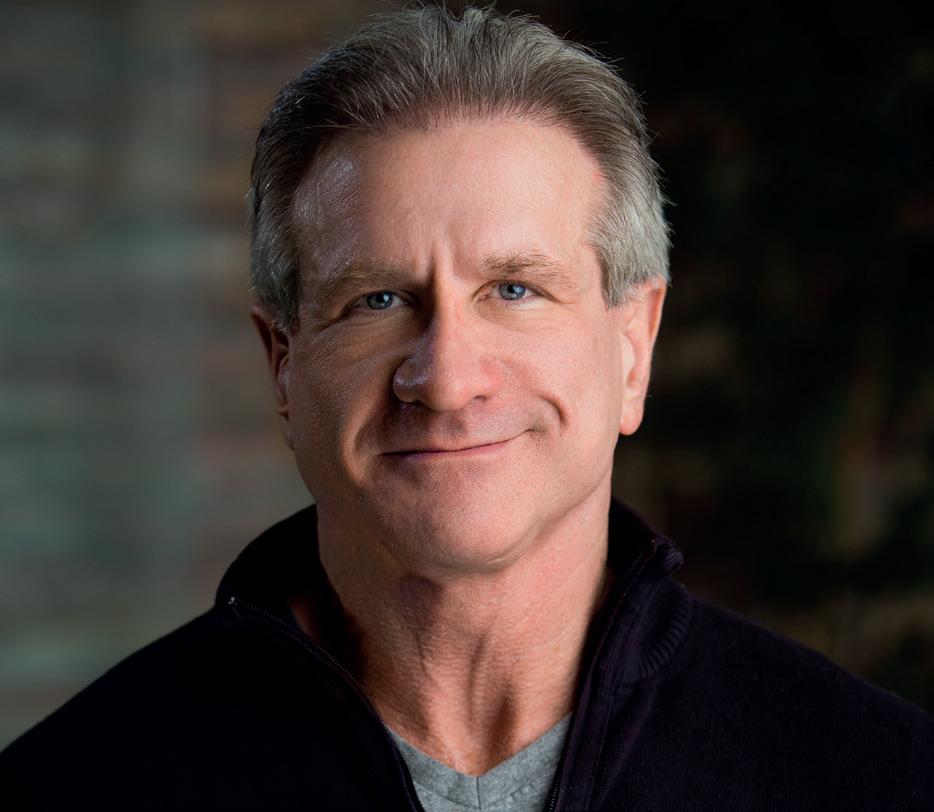
of innovation. A philosophy of being a fast follower with less tolerance for experimentation is perfectly reasonable, as long as the objective is aligned with the level of maturity.
and Social
Programs with significant impact require that leadership take chances, and moving into new areas entails risk that many may not be prepared to take. A leader with the vision of a new way of operating needs to understand the nuances and mechanics of making the innovation an operational reality. That requires a track record and organizational social capital. If the program is risking social capital, execs need to be sure that they are doing all they can to reduce risk and ensure success. Being realistic
around organizational capacity and capabilities is a prerequisite.
Many programs are funded based on ROI projections. Frequently, projects are funded to address identified gaps in capability; however, these are sometimes only the tip of a capability gap iceberg. At the surface certain things appear to be straightforward, but during a project, those surface issues are peeled back to reveal bigger challenges that were not anticipated. This is where current state maturity models can provide a higher fidelity understanding of what needs to be in place to operationalize.
Maturity models show the organization what is achievable and how much needs to be done to build fluency and capability. For example, a proof of concept (PoC) can afford to carefully cleanse, structure and enrich data. However, production data sources are not afforded the same degree of curation and attention. Getting that production data in shape for full deployment can require resources that were not anticipated or budgeted.
Along the lines of maturity, upstream processes also need careful evaluation. One organization put a lot of resources into the content and data models that would support personalization. When it came time to deploy, however, the marketing function could not identify differentiated messaging that would be used for personalization. The infrastructure was there, but the supporting process to locate the appropriate the messaging was not.
Even when embarking on supporting foundation projects around data quality or completeness, the organization needs to show a linkage to measurable results. Data quality can be scored. Data supports a process, and it is critical to instrument the process (and gather baselines) that will be impacted. Processes support business outcomes which are also measured, so there is a connection. And outcomes support the enterprise strategy. Linkage from data to process to outcome to enterprise strategy will retain executive attention and funding.
To recap, success with AI requires: Clarity of business purpose Detailed understanding of processes
The correct, quality data sources structured for the application
A culture that is open to new ways of working An understanding of which aspects of a process can be improved or automated using AI technology
A strong sponsor with social capital Adequate resources and funding The right supporting processes
A way of measuring results – upstream and downstream
Acting on these guidelines will improve the likelihood of success. These principles apply to many types of enterprise projects, and AI is no different. There are more dependencies and complexities to today’s technology initiatives, and success requires attention to the basic blocking and tackling. AI will not understand the needs of the business by itself. It needs enterprise support from the ground up to the C suite.


Brian Gladden (CEO of the Strategy and Innovation Institute (SI2)) is a seasoned corporate innovator, Blue Ocean strategist, and business model expert. He has over 30 years of consulting/sales experience with start-ups and Fortune 500 firms such as Verizon, Sprint, Intel, Cisco, and CGI. As an accomplished speaker, mentor, and business coach, Brian has worked with multiple national and international organizations, including Vistage, the Small Business Development Corporation, UC Davis Child Institute for Innovation & Entrepreneurship, Start-up Calgary Innovation Week, and many more.
In his current role, Brian is helping executive teams get to market faster and with reduced risk by helping them identify, validate, and build solutions to customers' biggest problems! “Our vision at SI2 is to inspire business leaders to be innovative so that they can create new solutions for real problems,” reveals the CEO of SI2.
There have been many life instances that have shaped Brian into the thought leader he is today.
Sports taught him to trust and rely on team members and develop problem-solving skills and discipline. “As a quarterback, I had to put people in the right positions and change the play according to what the competition was doing. No different than business,” shares Brian. Most importantly, it led him to be objective, inclusive and diverse, a must-have leadership trait.
Coming from a family of educators, Brian also possesses a similar pursuit for knowledge, which he has followed to date. While traveling abroad to get his MBA in England, he developed a broader perspective on other cultures. “My biggest life lesson in business that has shaped me as a leader was starting my own business and going bankrupt. The learnings from that experience provided me with the real-world knowledge to help improve my decision making since,” reveals Brian.
Likewise, Brian’s faith has been a large part of his life. “Trying to do the right thing in life and in business is important to me,” shares Brian. On a personal level, Brian’s active involvement in Rotary International from the time he was in high school to today has empowered him to see how other business leaders give back and make a difference in the community.
In 2019, Brian incepted SI2 to help businesses find unmet customer demand and create uncontested market space by using the leading proven strategy and innovation methods to make the competition irrelevant
According to Brian, the main challenge for any sole proprietor or small firm is that the CEO must wear many hats. He further adds, “As a business owner, you have to think long-term and set the vision and purpose of the company, while at the same time, also execute the daily tasks to keep things going.” Start-up leaders must also focus on reaching and gaining new potential customers. This creates an issue of time and focus for them.
Therefore, to solve the time/focus issue, Brian has created a high-level strategic plan that he not only uses while coaching other people but also implements in his personal life. He also considers surrounding oneself with outstanding people with a shared vision and purpose
extremely important. “If you create a group of close networking colleagues, you can leverage their expertise and connections to help further your goals,” reveals Brian. Moreover, the ultimate way to reach more customers is to align with organizations that have instant credibility and are regarded as thought leaders in their areas. “You must create a reason for customers to come to you, versus trying to always find them,” says Brian. “But, the most important start-up challenge (and business challenge in general) is to ensure you are focused on the customers’ needs. It is not about your idea, the technology, or the solution. The main mantra for all of my consulting work is taken from Ash Maurya, the founder of LeanStack—love the problem, not your solution.”

For several decades, Brian wanted to own his consulting practice based on strategy and innovation. But he was scared to start another firm after his first attempt went bankrupt in the mid90s. Brian wanted to prepare himself in every way he could before starting his latest venture. Hence, in 2016, he completed his doctorate degree in business strategy and innovation from Capella University. Additionally, Brian’s previous experience of working with leading consulting firms had enlightened him about the industry lacunae. Many of the consultants in the big firms do not have the years of real-world experience, coupled with advanced degrees, to be consulting a CXO on a critical issue. They also do not use, and are not certified, by the leading strategic innovation best practice frameworks. These firms aim to create their own processes and tools which can be monetized, and ultimately focus on IT system integration more than management consulting.
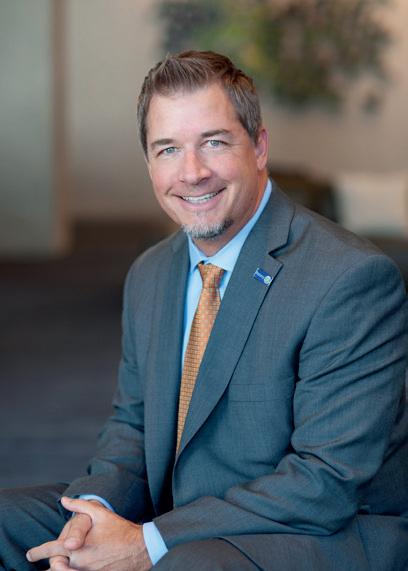
In 2019, Brian incepted SI2 to help businesses find unmet customer demand and create uncontested market space by using the leading proven strategy and innovation methods to make the competition irrelevant.
There are only a handful of consultants worldwide, such as Brian, who have decades of real-world business experience, are certified in the leading strategy and innovation frameworks, and have a scholarly background in the field. SI2 clients can seek coaching from Brian on a specific framework and tool, or they can simply convey their goals and challenges and let Brian use the right tool and process as needed to get them to the desired outcome.
Moreover, as per the Boston Consulting Group’s 2020 report, a business model on average now lasts only up to 5 yrs. If leaders do not hurry to focus on refreshing and innovating their businesses, chances are someone will disrupt the space and offer better alternatives to their customers. SI2 is among the few firms that help corporations move from product innovation to business model innovation. “SI2 is unique because we help firms to define their strategy and culture, put a formal innovation practice in place, as well as execute and measure their innovation objectives,” states the CEO of SI2.
“We have survived and grown through COVID-19,” shares Brian. During SI2’s first year, Brian took multiple pro-bono projects to prove his work and create testimonials,
including free speaking engagements and workshops. These efforts generated minimal traction and revenue for SI2. “When COVID-19 hit in 2020, I assumed it would be a difficult year to grow and get more traction as most businesses were worried about staying in business with the crisis,” reveals Brian. However, the needs of potential customers changed overnight. Businesses were looking for solutions to new problems that didn’t exist in the past. For Brian, this was an opportunity waiting to be tapped. By focusing on clients’ problems, SI2 helped businesses grow, innovate, and compete differently despite the pandemic crisis.
There are a few steps that Brian implements to ensure client satisfaction. The first is to
understand their business, vision, and issues they are trying to solve. This sets the stage for everything. He then tries to customize his coaching and consulting services to best fit their situation and needs. After the engagement, clients are requested to share their testimonials to showcase Brian’s work. “I also ask the client what I could have done better on, so I can continually improve,” mentions Brian.
As a strategic innovation consultant, Brian coaches companies on how to develop their innovation capabilities and teaches them many of the leading strategic innovation frameworks. “To begin with, every company must have a purpose and vision statement. Once a company knows its purpose, new ideas and opportunities are easier to examine,” shares Brian. It is also imperative for businesses to have a starting point to innovate from.
The second step to creating a culture of innovation is to assess where the organization is in terms of leadership support, organizational structure, and innovation practices. Once there is an understanding from executives of their current innovation environment, improvement plans can be created to work on the lowest scoring areas. “For this, I use the Culture Design Canvas tool from Great Mondays to help companies create the actions that will help them live out the culture they want,” mentions Brian. The last step is to map current organizational behaviors that cause positive and negative outcomes regarding innovation. He adds, “To discover the root cause of those behaviors so we can change or emulate them, I use the Culture Map tool from Strategyzer.”
As a strategic and innovation consultant, Brian coaches companies on how to develop their innovation capabilities and teaches them many of the leading strategic innovation frameworks
The first career milestone for Brian was accepting the management role with Sprint for developing partner channels. This opportunity allowed him to view things from many perspectives at once to create solutions for real problems. The next milepost was the opportunity to work with an international firm called Nitto Denko of Japan. Afterward, Brian, being the only retained employee, experienced his first M&A with Leybold Technologies and 4M. Seeing and being a part of a global acquisition helped him see things from a CEO’s perspective.
Later, incepting his first dotcom start-up, only to see it shut down in less than a year, was a huge learning curve for Brian. This experience taught him that there needs to be a validated business model to start any business. He then joined MCI just after the WorldCom scandal. That period showed him how influential culture and ethics are in any industry. Thereon, once with Verizon, making it into the Verizon President's Club was extra special to Brian.
Brian’s typical day at work begins between 7 to 8 am, with most of it spent responding to emails, scheduling new projects, seeking updates on ongoing projects, and attending Zoom calls. He then finishes his work by 5 pm and spends an hour at the gym, followed by having dinner with family. From 9 to 11 pm and sometimes later, he returns to work, prioritizing assignments and Zoom calls for the next day. To help balance his daily life and reduce stress, Brian likes to travel, lift weights, do cross-training, and watch sports. However, his favorite activity is spending time
with his wife and 2 teenage daughters (and two female dogs as well).
Throughout his whole career, Brian has experienced working both remotely as well as in the office. During the COVID-19 pandemic, Brian shares that he could reach more people virtually via Zoom than he could have ever dreamed of. Even though there is no substitute for meeting in person, the quick move to video meetings has helped accelerate the adoption of his coaching work. Likewise, using technology in terms of whiteboards like Miro and Mural has been extremely helpful. With life returning to normal in the post-pandemic era, Brian is looking forward to big events and in-person workshops again.
Currently, SI2 is working with several nonprofit social impact companies looking to refresh their business models. The company is also working with a few Fortune 500 firms to help them integrate lean start-up best practices into their corporate innovation processes.
As a consultant and coach, Brian is planning to launch some new CXO peer advisory groups based in the Sacramento region, which he will lead. The aim of these groups is to create an environment where leaders can find and give support, solve problems and achieve their goals among other leaders who face similar challenges. Moreover, he is looking forward to launching the second cohort for a certificate in Innovation & Entrepreneurship in January at the Sacramento State University Carlsen Center for Innovation & Entrepreneurship.

Luisa Ferrario, Founder, Elle Effe Consulting Ltd.
Rebel Transformative Leader, Luisa Ferrario helps entrepreneurs to set up thriving businesses and make the money they desire by having in place an impactful mindset, profitable business structure, and empowering leadership to rapidly grow their company and joyfully lead their team of rockstars.
Founder of Elle Effe Consulting Ltd. and entrepreneur for 25+ years, as a Growth Mindset & Leadership Mentor she has been chosen for 15 years by business owners and CEOs across a range of companies from Scale-ups to Fortune 500 and World Leading Organizations such as Coca-Cola, Pfizer, Amgen, Merck, Boston Consulting Group, KPMG from 20+ Countries to implement cutting-edge business transformation to help their teams and business thrive beyond what is expected. Her focus on transformative business growth and intentional leadership stems from her own experiences with abuse, hypersensitivity, dyslexia, and chronical illness. She owns the astounding power to get the unspoken heard, the hidden revealed, and the unfelt perceived. This is why she is also called Hidden Leading Forces Ninja. As she truly understands and appreciates entrepreneurial leadership, she knows how to help fellow business owners grow their companies and transform them in an authentic way, in full alignment with their principles and aspirations.
Luisa also serves as Cyprus Country Chair Mentoring & Motivation Wing of G100, a group of women leaders from across the world advocating a gender-equal future worldwide within this decade.
In an exclusive chat with CXO Outlook, Luisa Ferrario speaks about her role as a rebel transformative leader, how she assists entrepreneurs become successful, the benefits of having a mindset & leadership mentor, and a lot more. Following are the excerpts from the interview.
Growing up, people started telling me that either my passive or active presence in a room seemed to have an accelerating effect on improving people and situations
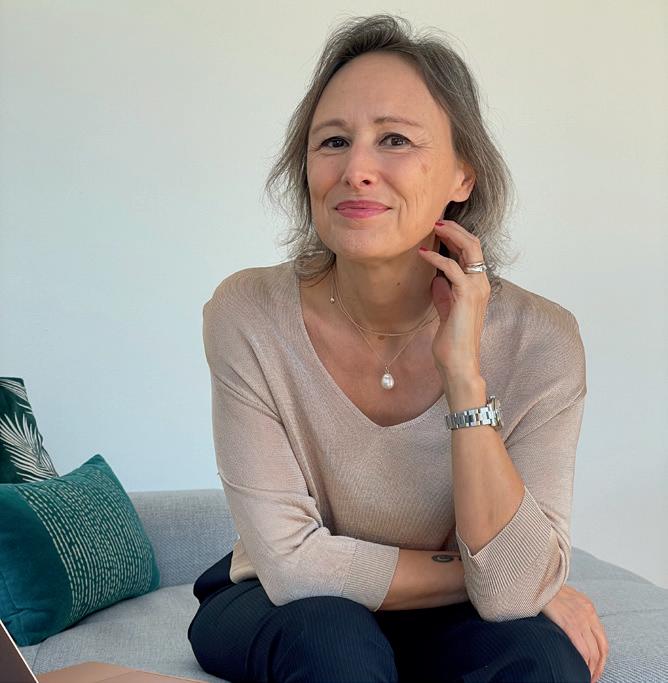
As a matter of fact, stats tell us that small businesses make up 99.9% of all U.S. companies but a minority of the workforce, as womenand minority-owned businesses still lag far behind firms owned by cisgender heterosexual white men.
Even if women-owned businesses have skyrocketed by 114% over the past 20 years, the revenue share of women-founded businesses has fallen by .02% in that same period. That’s

a big challenge, especially because minorityowned businesses are less likely to attract outside funding. They literally don't know how to do that, since they lack the right mindset, emotional and entrepreneurial literacy, and leadership approach to keep moving forward and consistently grow.
In the U.S. alone, 50 out of 100 business owners will end up shutting down their businesses. This will result in giving up their entrepreneurial aspirations and dream lifestyle within the first 5 years.
In addition, 95% of business owners I personally talk to aren’t growing fast
In today’s rapidly evolving business environment, what are the biggest challenges faced by entrepreneurs and small business owners?
enough to keep up with their individual and business needs.
These stats are daunting! I was shocked when I saw that such a high percentage of business owners have issues growing their businesses.
Your LinkedIn profile describes you as a Rebel Transformative Leader. What does ‘rebel’ mean?
Transformation is my primary language.
Since I was a kid, I had to learn to quickly adapt, shift and transform my communication style to survive the difficult environment I was living in.
Quick note - Whenever I mention ‘communication’, I refer to any ways we share and exchange information: verbal, written, and non-verbal, such as behaviors, interactions, and relationships with ourselves and others.
Growing up, people started telling me that either my passive or active presence in a room seemed to have an accelerating effect on improving people and situations.
Experience after experience, I’ve built my life and my main business around my natural transformative talent (or coping mechanism… who knows?), and I’ve kept training to master intuition, uncommon skills, innovative tools, and groundbreaking techniques to let the transformation happen as safely, permanently, and rapidly as possible.
Also, as a neurodiverse and highly aware individual, I’m the opposite of a conventional person and not at all a typical entrepreneur. Where others fit in, I usually do not or not completely. Where others say ‘Yes’, I might say ‘Yes, But…’ and unapologetically bring on the table my own perspective. My unique approach
is not liked by everyone, but those who love my style and the results it brings are obsessed with it.
This is one of the two reasons people call me a rebel.
Another reason is that, according to a communication model I studied years ago, we all have a specific personality type. Mine is 'rebel'.
It describes individuals who are generally creative, fun, playful, loving, and radiate positive energy for others. They respond promptly, reciprocate righteousness with virtue, and enjoy the present. The Rebels are valued for their extemporaneous humor, interest in others, energy, and problem- solving ability. They are usually selective, a bit impulsive, choose quickly, and classify the world around them through their likes and dislikes. It sounds a lot like Luisa Ferrario!
When you want to succeed as a business owner you have to be 100% committed, resilient, and resourceful because challenges could be waiting for you just around the corner. We are all still trying to make it all work
As a growth mindset and leadership coach, which has been your most successful training/mentorship program till date? What makes it a standout winner?
We work with business owners who have been in business for at least 2 years, and who are seriously committed to becoming the CEOs of their own companies.
It’s going to be close collaboration and partnership.
According to their stage of growth, our accelerators are designed to take fellow entrepreneurs from not growing fast enough or slowed down in leading their companies to have a thriving growing business:
‘Ninja Business Accelerator’ will take them to double the monthly income in 90 days or less ‘Ninja Leaders Accelerator’ will take them to become the impactful and accomplished leader of a team that rocks and a thriving company.
We work with our clients on three key-pillars:
Rewire the most hidden and crucial emotional, mindset, and vibrational roadblocks that are keeping them from making the money they desire
Get crystal clear on the most relevant message, niche, offer, pricing, growth strategy to help them activate a thriving business and attract their dream clients
Dive deep into the most compelling millionaire CEO vision to identify the most impactful leadership behaviors that will make their success inevitable
Each program is tailored to help our clients align their mindset, business structure, and leadership to activate their Inner CEO and
give them strategies, tools, and shortcuts to consistently attract and say yes to growth opportunities to rapidly expand their business.
Business owners we work with are those who truly believe they should be an inspiring, wealthy, and successful entrepreneur, who will use that cash and power to impact many other lives; they appreciate and agree with being respectfully challenged on habits and beliefs that have been keeping them playing small; they thrive in a non-judgmental environment where there is room and willingness to learn, share, fail, collaborate, transform and grow; they are committed to getting to work without excuses; they are proactive and expect to receive tangible and intangible results; they are enthusiast coach, consultant, or another type of service provider, who helps others to grow, flourish and evolve.
We believe that abundance mindset and intentional leadership is the most powerful business growth accelerator combo to activate business potential and get exponential results fast.
We live in such a fast-paced world, full of resources and opportunities. Entrepreneurial success shouldn't take a lifetime. It should start to happen now.
We are here for that: to help them make desired entrepreneurial results happen now!
One of my leading beliefs is that human beings are perfectly gifted.
My point is that we are the good, the bad, and the horrible, and we are able of doing the good, the bad, and the horrible.
This means that we can be whoever and whatever we choose to be. Additionally, I believe that humans are inborn changemakers.
However, although we are transformation powerhouses, we might not yet be fully activated to produce the desired outcome. In other words, sometimes we just need a mentor or activator to help us trigger and ignite our inborn abilities. This will allow us to transform ourselves from the inside out and become empowered, meaningful, and satisfied CEOs of our own companies.
It is also my belief that a fulfilling transformation can only occur when we choose intentionally. Today, I believe 'Yes, I can'. I believe 'Yes, you can'. I think 'everything is possible'. I believe that I am not what happens to me, but life happens for me, for my learning, for my fun, for my joy, for my evolution, and as a contribution to other entrepreneurial lives.
Therefore, besides being an entrepreneur and a mindset and leadership business mentor, I am also the G100 Cyprus Country Chair Mentoring and Motivation Wing.

G100 is an influential group of 100 women leaders from across the world, in 100 wings and sectors, supported by 100 eminent He for She champions, and 100 country clubs in each wing for powerful advocacy, awareness & impact across governments and global organisations for a gender equal future in this decade.
G100 global vision is to create an equal, progressive & inclusive environment for women worldwide. The mission is to provide the thought leadership on what needs to be done for inclusivity, safety, economic & social empowerment of women globally, addressing genders gaps and achieving gender parity within 2030.
I have always done my best to keep my focus on the bright side of the story by reading tons of inspiring books, attending courses and events where I could meet like-minded empowered and empowering people, and learning how to invest my time, money, and energy instead of just spending them
My acceptance of this role was based on the fact that, just as I did, I will never let other women or men fall below my highest standards. I do not accept excuses. Do not tell me you are not educated enough, financially able, or good enough to accomplish all sorts of amazing things. This is a lie. I can tell you.
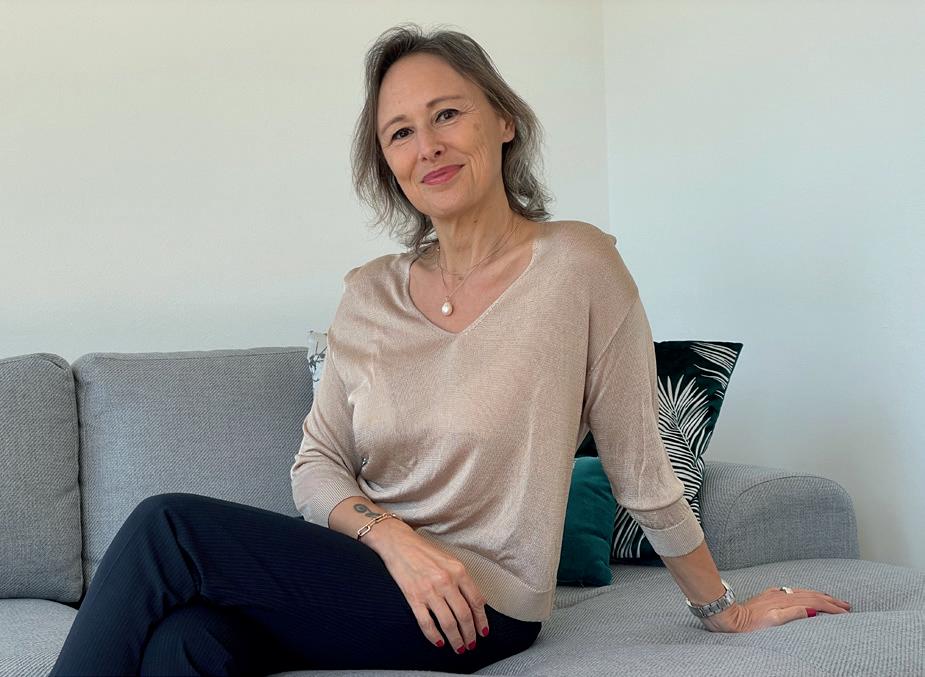
This is a lie as I am living proof that successful entrepreneurship and leadership can happen. No matter the disempowering life circumstances I had to face – abuses, being a broke single mom, chronic illness, not having a university degree, learning difficulties, and so on – I just chose to put myself first. I made one choice at a time. This was even when I did not have a compelling vision for my future. Even
Be really clear on what kind of entrepreneur and leader you want to be. What do you stand for? What is your leadership style? How are you showing up in the world? Who are you talking to? What gifts, strengths, and talents make you unique? You have to own your message!
when I couldn't see anyone waiting to hug me and celebrate with me at the end of the tunnel.
Your life is your choice. Your business is your choice. Choosing to have a mentor is your choice. You determine what impact you want to make and what kind of leader you will be.
If I can offer some free advice here, I would say ‘keep intentionally choosing yourself. Keep putting yourself first because you are just the result of your own choices.’
I am committed to empowering women and other entrepreneurs worldwide.
What is your biggest goal? Where do you see yourself in 5 years from now?
For centuries, white men have traditionally owned the entrepreneurial and leadership space. This is not good or bad. It’s just an undeniable fact.
In my eyes, mind, and heart, entrepreneurship and leadership is a unisex, heterogeneous space where every side of society should have an equal voice to shape a more inclusive, kind, and equal world.
Five years ago I realized 85% of my clients were cisgender heterosexual white men. I then told myself: "It's time to balance that. It is time for a big change, and I am committed to taking an active, resourceful role in it."
There are so many people, especially women, who have untapped entrepreneurial and leadership potential.
I know what I’m talking about. I come from an abusive household. Plus, I’ve been dealing with chronic illness, dyslexia, and hypersensitivity all my life; I have raised my daughter alone as a single parent since I left a gaslighting relationship 20 years ago; I have
always been the only breadwinner. So, I have been there… more than once.
It's time for small business owners to take up space, make the money they desire, and lead companies, teams, and countries.
That's where I’m heading. That’s what my company, Elle Effe Consulting, is all about.
As a growth mindset and leadership coach, international speaker, and entrepreneur, how do you develop yourself and continue to grow? In what ways are business owners as leaders of their own companies benefitted from having a mindset & leadership mentor?
I decided from day 1 that I was always going to have a coach. And that was one of the most successful decisions I ever made as an entrepreneur.
I'm 53 years old at the date of writing and I'm currently entering my 21st year of seriously running a business. And during that time, I have never not had a coach, or a mentor, or a psychoanalyst, or all of them.
How did I make that work, especially at the beginning when I was a single parent in the midst of a divorce? During this time, I was in a financial and personal crisis and at risk of losing custody of my daughter. I had no money to hire a coach, but I knew that always having a mentor on my side, was exactly what could enable me to keep moving forward and be able to create multiple businesses around the globe I was dreaming of (I have founded 12 businesses in multiple countries since then).
I will be the first to tell you that I'm not that smart. The one thing that I did really, really well
is that I just made a decision that coaching was an extremely high investment priority for me. In other words, I would have always had a coach no matter what happened in my business and life. That was it.
My first mentor was amazing… she was just incredible. She helped me get my first clients, start building an abundance mindset, sharpen my competencies, learn how to create transformational programs, and enhance my leadership to be proudly visible.
When I met her more than 20 years ago, I was literally in the valley of despair, but I knew that I had to do something courageous. Becoming more courageous, believing in myself, and following my calling were crucial for me. To unleash my potential and to lead myself out of my strengths and gifts, not out of fear and scarcity, I had to go beyond myself.
What did I do? I made a scary but exciting deliberate choice to put myself first. It was 2001 and I committed to paying her € 1.000/month for 2 years.
My bank account had less than € 2.000 in it when I said YES to working with her. This was the amount I needed to pay rent, buy food for myself and my daughter, pay the bills, etc. I had absolutely no idea how I was able to pay for it.
It was a super tough time in my life. In fact, I woke up one day to realize that none of the most crucial areas of my life were working: my marriage was not working; my health was not working; my finances and my company were not working.
But I was so committed to succeeding and making this entrepreneurial experience happen. I need a coach to help me make it happen. I didn't want to take forever to figure that out on my own.
So, I said yes. While I had no idea how I found the money, I knew I had to be resourceful, as this is the gist of entrepreneurship. Here is what I did: I sold some gold jewels I inherited from my mother, and I started cleaning apartments for a few months while my daughter was at school. In that way, I could pay for the first two months of coaching.
In addition to putting in place the strategies that my coach recommended, I also had to let go of shame, shyness, and lack of confidence. This was to make space for new clients to come in.
My coach never missed a payment from me. This was something I was so committed to.
She helped me land my first client after 45 days and a second one after 63. And it was awesome. When our business relationship ended, I then had further coaches, trainers, mentors, and so on, to keep a consistent income, learn new skills, become more visible, expand my network, create new offers, increase my prices, transitioning from B2C to B2B, challenging my habits and mindset, training my financial and emotional literacy, and so on…
Not every experience was good or good enough… a couple of times I paid in full and didn’t learn almost anything. The experience felt like throwing money away, but failure is part of the entrepreneurial journey, and I gained a great deal of awareness.
When you want to succeed as a business owner you have to be 100% committed, resilient, and resourceful because challenges could be waiting for you just around the corner. We are all still trying to make it all work.
I have always done my best to keep my focus on the bright side of the story by reading tons of inspiring books, attending courses and events
where I could meet like-minded empowered and empowering people, and learning how to invest my time, money, and energy instead of just spending them.
That’s what I still do. And I still have mentors. I am a work in progress. I am not done at all. I’m here to learn how to transform myself to transform the small business industry, one entrepreneur at a time.
We have to make bigger moves, make braver choices, and make bigger asks (especially to ourselves), in order to reach our goals. Quick, intuitive, but courageous moves.

That’s what the entrepreneurial lifestyle is about.
What advice would you give to someone going into entrepreneurship for the first time?
Be really clear on what kind of entrepreneur and leader you want to be. What do you stand for? What is your leadership style? How are you showing up in the world? Who are you talking to? What gifts, strengths, and talents make you unique? You have to own your message!
Your message should be your mantra.
Clear, direct, and intentional communication is the key factor to being a confident, impactful, and powerful leader.
So, when you walk into the room to speak to a potential client, you will own the room (even the virtual one). When you sit down at a team meeting, you will feel confident and in control.
As you ask for money for your cause and fundraise, you'll be inspiring, but powerful and straight to the point.
When you speak, you will engage stakeholders and they will listen. You will feel confident when
leading a presentation, designing a workshop, speaking on a podcast, writing a newsletter, and answering questions for an interview. You will also own your boundaries and surround yourself with a powerful professional network. On this network, you can promote your offer, have a real-time conversation to work through a challenge, foster friendships, give back, and contribute.
When you own your message, your values, mindset, emotionset, skillset, and actionset will be aligned. Once you have that and you are committed to getting to work without excuses, this is where the magic happens. This is when opportunities knock at the door. This is when you attract the right people and situations to make your success inevitable.
I believe work shouldn’t be hard, it just needs to be consistently done!
This will also lead you to have a joyful entrepreneurial experience. Joy is a serious matter when it comes to growing and leading a successful business!
Website: https://www.lifeintelligencegroup.com/
Headquarters: New South Wales, Australia
About the Company: Life Intelligence Group is a technology company established in 2018 with a vision to use the power of AI and Machine Learning to help individuals, teams, and businesses to optimise their capacity for success and wellness.

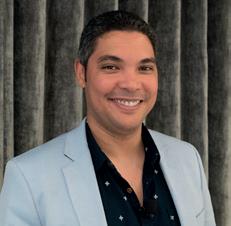

CEO, Si2
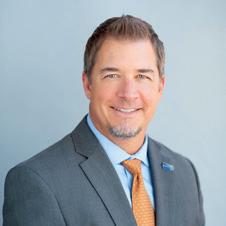
Website: https://www.si2blue.com/
Headquarters: California, USA
About the Company: The Strategy & Innovation Institute (SI2) is a management-consulting firm that helps executives transform and grow their company through the leading proven strategy and innovation methods.

Founder
Founder

Website: https://www.hayden.ai/
Headquarters: California, USA
About the Company: Hayden AI is pioneering smart traffic enforcement with its mobile platform to increase safety, efficiency, and sustainability.
Website: https://www.naturalcurelabs.com/
Headquarters: Florida, USA
About the Company: Natural Cure Labs is a manufacturer of dietary supplements that enables individual to live a healthy and fulfilling lifestyle.

Founder and

Website: https://www.finehh.com/ Website: https://www.safely2prosperity.com/
Headquarters: Amman, Jordan


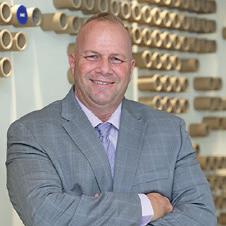


About the Company: As the first and largest hygienic tissue producer in the MENA region – amongst the largest in the world – Fine Hygienic Holding is currently present in more than 75 countries across five continents.
Headquarters: Massachusetts, USA
About the Company: S2P's powerful cloudbased solution automates the management of workplace vaccinations, therapeutics, testing, quarantines, and exposure tracking.
Website: https://www.delthapharma.com/en/
Headquarters: Rome, Italy
About the Company: Deltha Pharma aims to provide people with effective, innovative, and high-quality supplements that accompany them throughout their lives and ensure good health.

Website: https://www.botimageai.com/

Headquarters: Nebraska, USA
About the Company: BotImage’s software interprets multi-parametric and bi-parametric MRI using random forest with instance weight and MR segmentation by deep learning with holistically-nested networks.
Website: https://www.virtualrealityfranchise.com/
Headquarters: Ontario, Canada

About the Company: Ctrl V was North America’s first virtual reality arcade and is currently the largest virtual reality arcade chain in the world.




Website: https://www.lavellenetworks.com/
Headquarters: Bengaluru, India
About the Company: Lavelle Networks offers network-as-a-service, where its software seamlessly manages, optimises, and secures the customer networks across their branch offices, data centres and cloud locations.


Chris Carson is a Silicon Valley-based serial entrepreneur, investor, and thought leader with over 20 years of experience raising capital and building high-performance organizations. His areas of interest include artificial intelligence, machine learning, computer vision, robotics, and digital transformation. He is also a veteran U.S. Marine who participated in the liberation of Kuwait and earned a pivotal role as a special operations team member in the Fleet Antiterrorism Security Team (FAST).
Currently, Chris serves as the Founder & CEO of Hayden AI, an award-winning company
revolutionizing how organizations solve problems with its mobile perception platform to speed up transit, make streets safer, and create a more sustainable future.
In 2007, Chris completed his Ph.D. from Waseda University, where his research was focused on simultaneous localization and mapping (SLAM), a type of computing where a device generates a map of an environment in real-time.
Years later, while riding a bus in San Francisco, Chris noticed that the bus driver kept pressing a
What we’re trying to accomplish at Hayden AI is huge: we’re revolutionizing how organizations solve problems with AI and machine learning
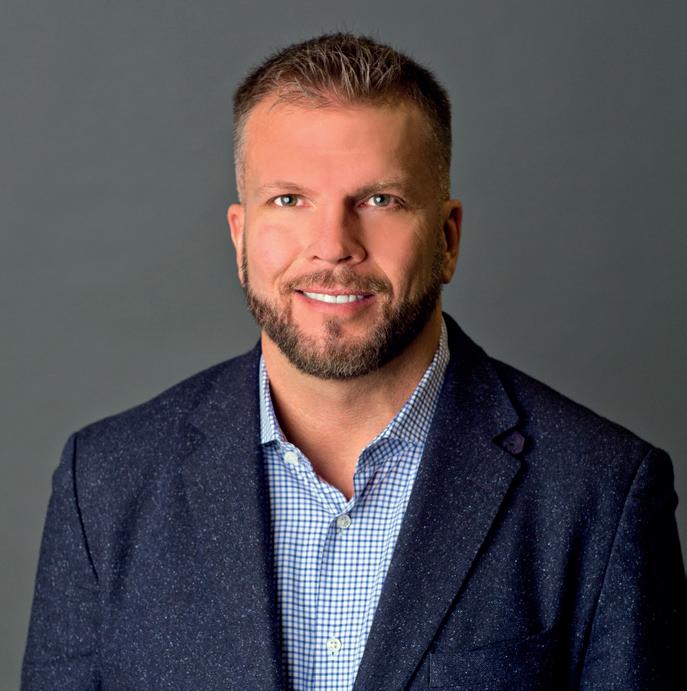

button that took a picture of an illegally parked car in the bus lane. It was a light bulb moment for Chris. “The perception system that my cofounders and I built following that bus ride is now upending the status quo in traffic management and so many other sectors,” said Chris. But Hayden AI’s mission goes well beyond this use case. Chris and his team plan to develop artificial intelligence and machine learning technologies to revolutionize how governments and businesses solve real-world problems.

“Our use of edge processing combined with artificial intelligence sets us apart from other technology companies,” reveals Chris. This patented perception system is incredibly and uniquely accurate. When conducting automated bus lane enforcement – the company’s flagship product – for transit agencies, Hayden AI installs its AI-powered camera systems on transit
buses. These systems use computer vision to automatically detect events on the street and edge processing on the vehicle itself to determine if the event captured amounts to a traffic violation. Because of this, only a minimal amount of data is transmitted to the cloud, keeping the data secure and saving human resources.
Additionally, Hayden AI’s privacyfirst approach ensures that its customers – typically government agencies and their industry partners – can advance their goals while vigorously protecting privacy and civil liberties.
Hayden AI’s privacyfirst approach ensures that its customers –typically government agencies and their industry partners – can advance their goals while vigorously protecting privacy and civil liberties
As the CEO & Founder of the company, Chris says that Hayden AI’s growth has been rapid from the start. Right after its launch in March 2019, the company was able to close its first seed round after only three months. On the technology side, Chris reveals that Hayden AI is expanding its uses for its patented perception technology beyond automated bus lane and bus stop enforcement. The new use cases include school buses, street sweepers, streetcars, garbage trucks, and law enforcement vehicles. Moreover, the company is expanding its offerings to include Digital Twin technology
that will enable government agencies to build dynamic, 3D models of cities and utilize geospatial analytics to monitor city assets, simulate policies, and model city infrastructure. In addition, Hayden AI is looking forward to growing its international customer base, particularly in Europe, the Middle East, and Australia.
At Hayden AI, client commitment is always at the top of its core values. More so, the company’s process is designed to be agile, responsive, and collaborative, constantly reacting to customer
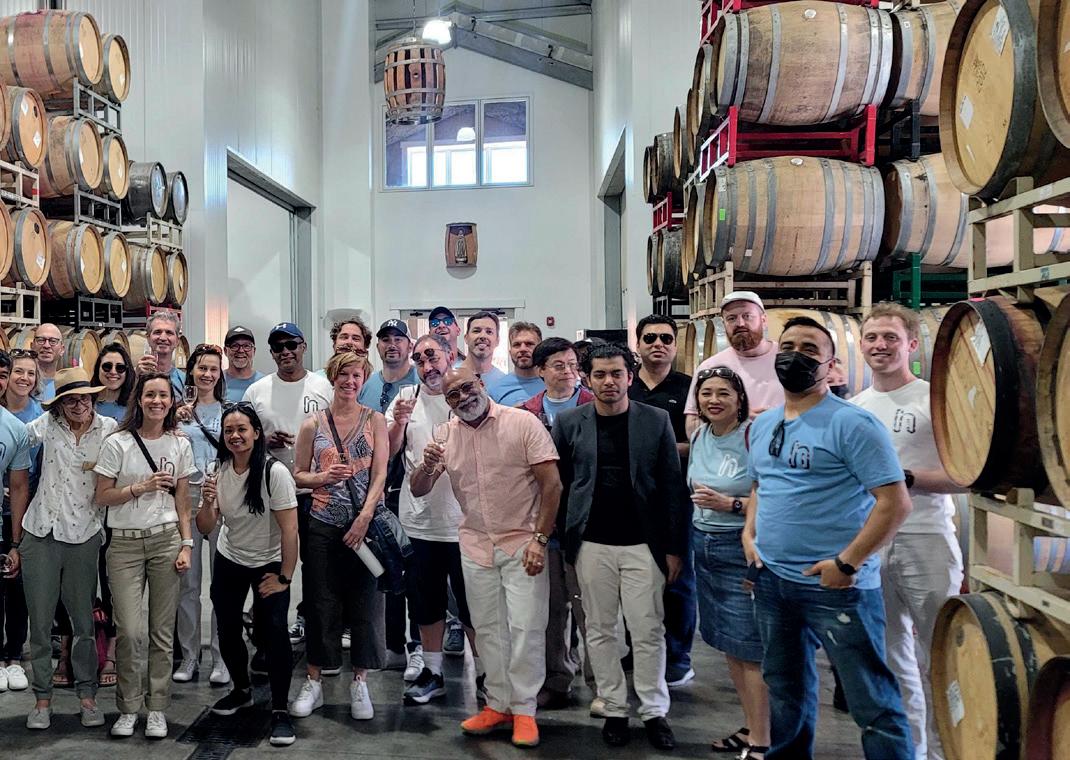
feedback and establishing a culture of consistently going the extra mile. This resonated with how Chris and his team go above and beyond to meet client expectations.
At one time, when Chris and his team ran a pilot automated bus lane enforcement program with one of the largest transit agencies on the West Coast, the client asked them if they could use Hayden AI’s perception platform to identify issues with their bus stops. Keeping track of bus stop maintenance – which bus stops need new shelters, benches, or updated signage – is a big challenge for agencies.
Even though this type of asset management was not in the initial scope of the pilot, Chris and his team were thrilled to be able to put their technology to use for this additional request. “Any way we can make our perception system more useful for our customers is a major win for us,” shares Chris.
One of Chris's biggest challenges as a leader is hiring the best talent. Currently, Hayden AI is targeting many segments dominated by large businesses that have occupied the space for
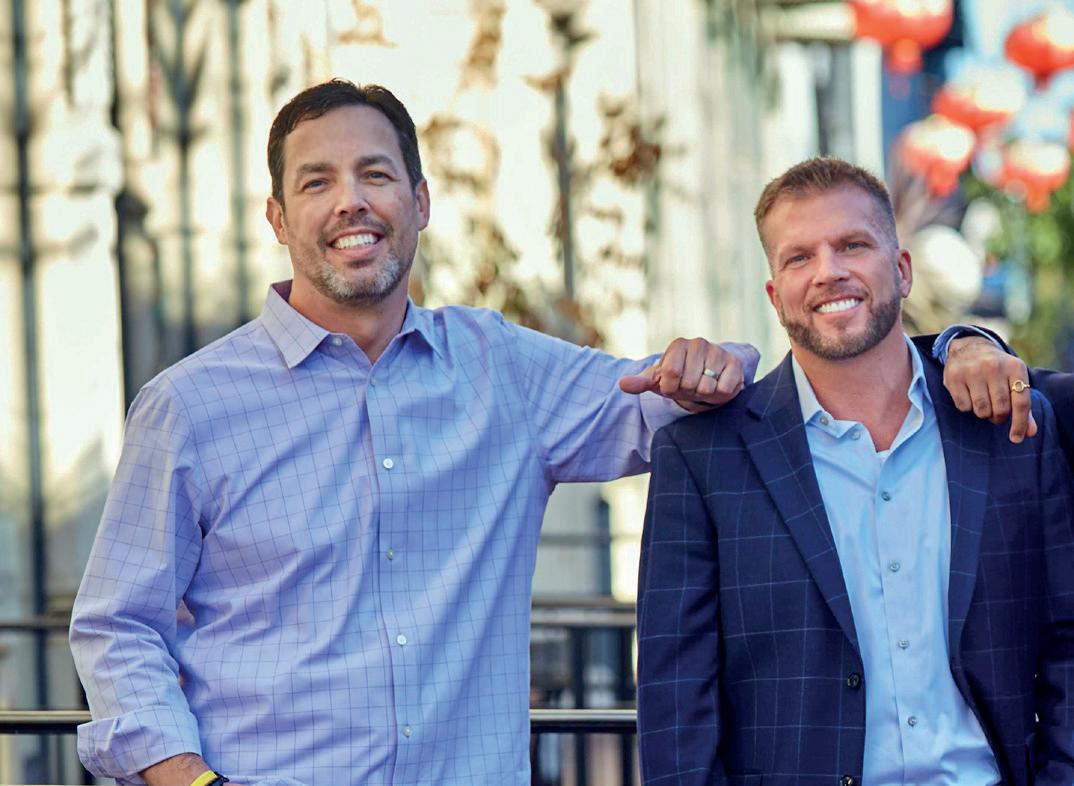
years and succeeded in cornering the market on industry knowledge. Therefore, disrupting this sector requires engineers who think outside the box and strategists who can identify which use cases can make the most impact with Hayden AI’s perception technology. As part of Hayden AI’s growth strategy, attracting the right talent with relevant industry experience and recruiting subject matter experts is imperative.
“As CEO, I’m overcoming this challenge by making people my priority,” mentions Chris. Last year, Hayden AI strengthened its talent pool by adding key team members with
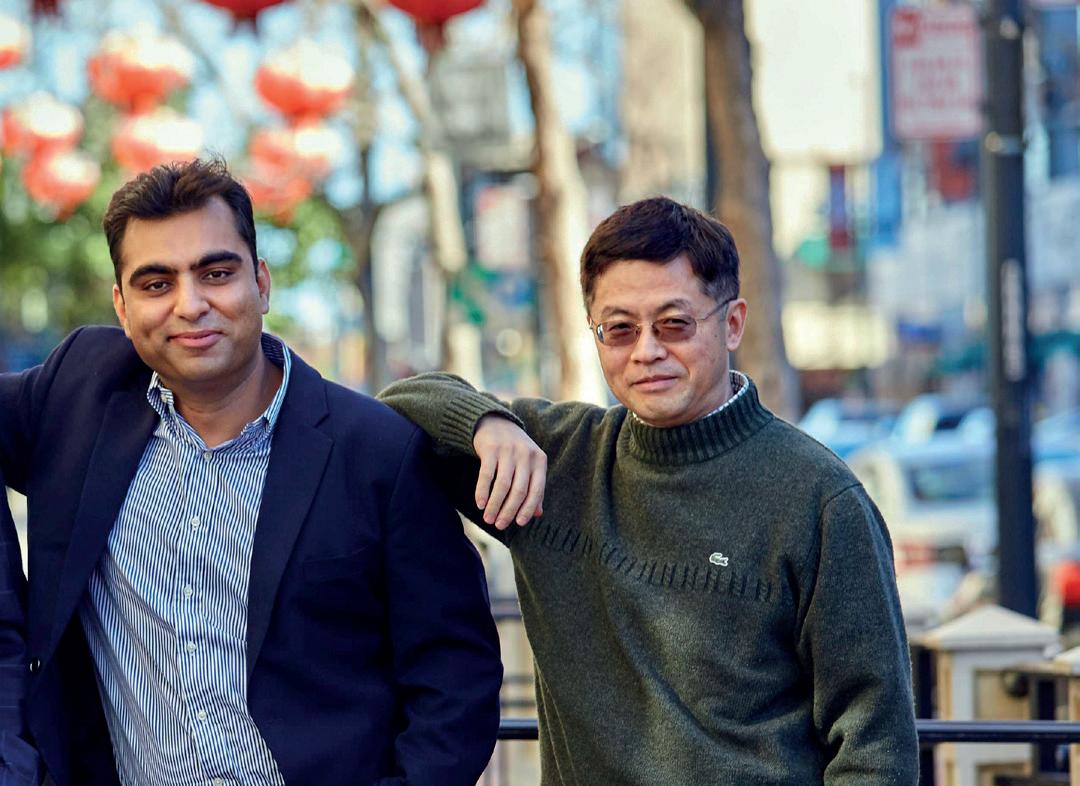
strong experience in computer vision, hardware, transportation, and cybersecurity.
“What we’re trying to accomplish at Hayden AI is huge: we’re revolutionizing how organizations solve problems with AI and machine learning,” shares Chris. “Grounding myself and my team in the hugeness of that mission helps us stay motivated and on track while also giving us the space to experiment with new ideas and even fail.”
Likewise, Chris is also focused on creating a positive working environment at Hayden AI. “Our
culture promotes learning and personal growth. However, what sets us apart from other companies is the importance we place on building a strong culture that emphasizes not only the value of cultivating strong working relationships internally but one that also recognizes the need to maintain a balance that allows our team members time to focus on their families,” adds Chris. Hayden AI offers remote work opportunities and an unlimited paid leave policy to make this happen. Besides these, the company also hosts various team bonding and family-friendly programs that make work more integrated and accessible and some leisure time to get to know one another. In addition, numerous


recognition awards for employees based on their performance, contribution, and teamwork are given every month.

The most important lesson that Chris learned from his early years is perseverance. According to him, launching a start-up is like the first day of school, where everything is new and, at first, seems very daunting. “But gradually, over time, by putting in place the right processes, surrounding yourself with the right people, and putting in the appropriate amount of effort, things start to become clearer,” adds Chris.
At a start-up, every day brings a new challenge, and while the stakes are higher than they are in high school or college, the strategies and tactics used back then still apply. Therefore, for a serial entrepreneur like Chris, mastering the art of perseverance comes in handy when adversity knocks.
Be it obtaining his Ph.D. or starting his first company, or being recognized as an Entrepreneur in Residence by his college, Chris has achieved numerous milestones that not only depict his hard work and dedication but also his passion for technology and innovation.
When it comes to Hayden AI, Chris achieved the mileposts one after the other. “In two short years, we’ve gone from a handful of employees to nearly 100; from a sketch of a prototype to a fully operating, revenue-generating piece of technology, and from a group of people with an idea to a company that dislodged an incumbent to be awarded a multi-year, multimilliondollar contract with one of the leading transit agencies in the world,” shares Chris.
Hayden AI is targeting many segments dominated by large businesses that have occupied the space for years and succeeded in cornering the market on industry knowledge
Moving forward, team Hayden AI’s next milestones include executing another round of funding, additional use case development, and ultimately deriving unicorn-level valuation for the company.

With teams working in both international and domestic time zones, Chris has endless responsibilities to fulfil. This surmounts to a never-ending, round-the-clock work day.
Chris credits his U.S. Marine Corps training for teaching him about combating stress and staying calm under pressure. He considers the issues that he and his team face at Hayden AI to be pale as compared to the challenges the brave men and women in the armed forces face every day. He also believes that providing steady leadership regardless of the situation comes with the territory of being an effective leader.
When the COVID-19 pandemic lockdowns were first declared in the US, Hayden AI was barely one year and at a crucial stage of finalizing its funding. However, due to the situation, Hayden AI experienced a few setbacks. Such challenging times taught Chris a critical lesson that flexibility is the key to both surviving and thriving as a start-up.
“We fought hard to continue existing as a company in those perilous times: we launched new products that weren’t anticipated in our initial product roadmap, we filed additional patents, and we stayed tenacious,” shares Chris. “This nimbleness has become integral to our company culture and has enabled us to adapt our technology to new uses.”
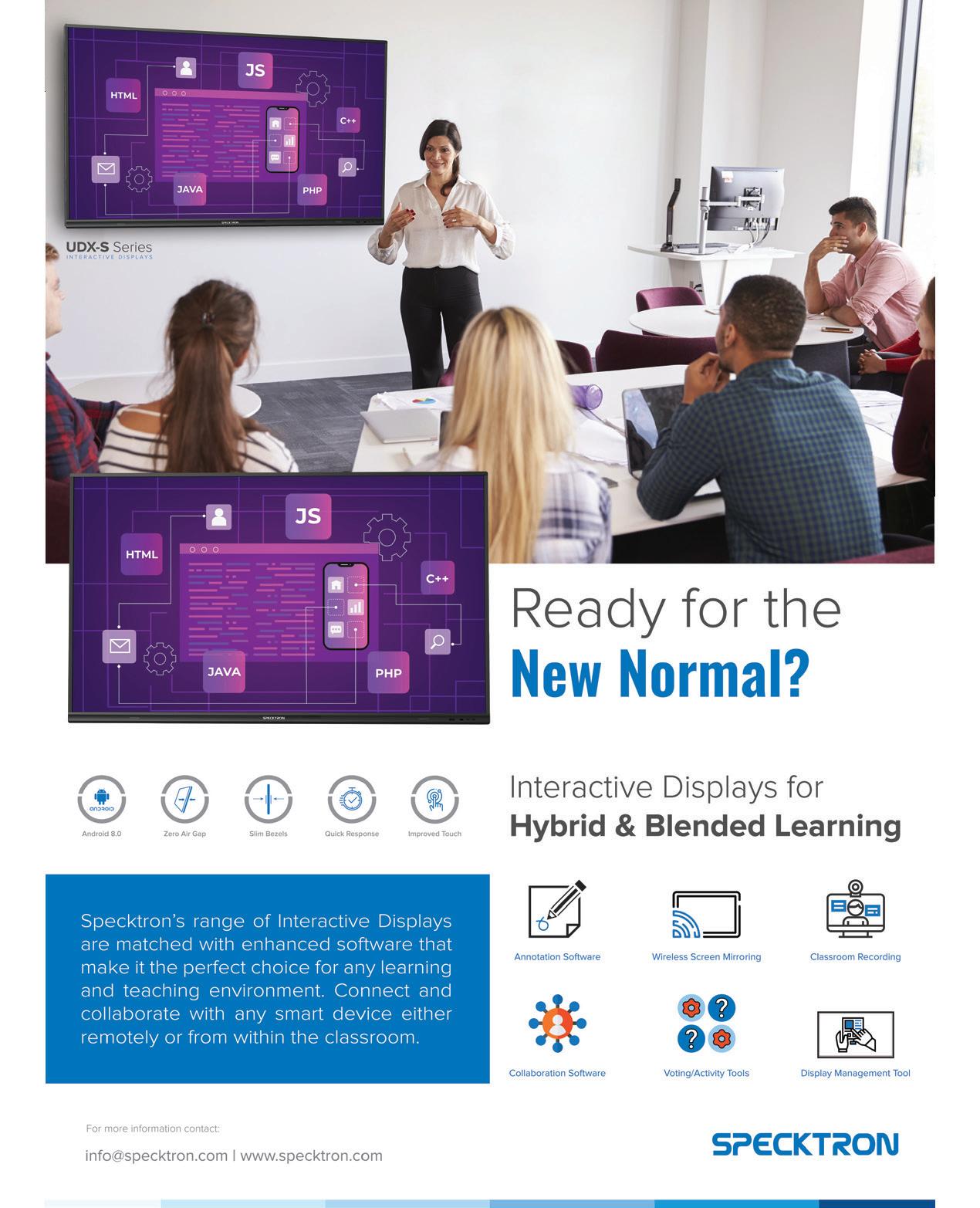
Be it obtaining his Ph.D. or starting his first company, or being recognized as an Entrepreneur in Residence by his college, Chris has achieved numerous milestones that not only depict his hard work and dedication but also his passion for technology and innovation
 EXPERT
EXPERT

An educator, engineer, entrepreneur, and community leader, Nick Suwyn started his software development journey at age ten building computer games for neighborhood children. As a child, he developed a love for music and after high school began sharing his passion by teaching after-school music programs at elementary schools around the Phoenix valley. As he was teaching, he attended DeVry University and graduated summa cum laude with a degree in Computer Information Systems. He then worked as a software engineer for two years before combining his love of technology with his aptitude for teaching and joined a coding bootcamp to lead their academic team. Two years later, Nick founded Promineo Tech with a mission to increase affordability and accessibility of technology education. Today, Promineo Tech is the leading provider of coding bootcamps to community colleges and Nick serves as the CEO, continuing to lead innovation that forwards educational access.
Today, almost everyone understands that finding tech talent is tough, but knowing it’s difficult does not compare to experiencing the pain of conducting countless interviews only to have a candidate you are finally excited about accept a competing offer and having to start the process all over again. It is exhausting.
The difficulty of hiring technologists is a symptom of an ever-growing IT skills gap in the United States. At the root of this problem, industry is growing faster than education can keep up with. Currently, through 2030, the projected average number of new IT roles each year is over 442,000, while only approximately 115,000 graduates enter the workforce annually via both traditional and alternative education pathways. In other words, we can summarize the IT skills gap by simply stating that only 1 in 4 posted roles will be filled between now and 2030.
In the face of these despairing numbers, and with jobs that need to be filled and work that demands completion, leaders must innovate and rethink how and where to find, attract, and grow tech talent.
Notice the vernacular used to describe the talent deficit is not a degree gap rather, a skills gap. Major companies like Google, IBM, and Tesla have realized what that means and dropped the requirement for degrees in tech roles, and many other companies have followed suit. With demand for talent at an all time high, it’s imperative that we look beyond a cap, gown, and piece of paper for skills and aptitude.
Two of the most common alternative paths to gain skills such as software development include self-learning and coding bootcamps. All the information needed to learn how to code is available
online and for free, and many take advantage of it and become phenomenal developers. Some of the best tech talent in the industry comes from this self-learning category, because they have proven the ability to self-start and solve complex problems without the need for external guidance.
Coding Bootcamps have been around since 2011 and were born out of necessity to help address the growing demand for tech talent. These alternative training programs focus on teaching the hands-on skills needed to hit the ground running with industry standard tools and methodologies. Unlike a degree program, bootcamps are short in duration, typically between 6 and 33 weeks long, and do not spend as much time on theory as they do on implementation. These programs were originally offered through standalone, training institutions like Galvanize, FlatIron, and Lambda, and later made available at universities and colleges through partnerships with bootcamp providers like Promineo Tech and Trilogy Education. In fact, in 2020 community colleges started heavily adopting the coding bootcamp model to increase accessibility to highdemand technology skills and help combat the increasing talent deficit.
Two reasons degree-bearing programs do not produce enough talent to keep up with demand include the cost of traditional education and the time it takes to graduate. Coding bootcamps were an answer to a call for technical training that was affordable and excluded any unrelated courses not necessary to learn software development.
While both degree-bearing programs and coding bootcamps are viable options for individuals looking to enter the workforce early on, coding bootcamps take the spotlight
when it comes to career changers. A four-year commitment and $60,000+ tuition is less than ideal for people who have previously spent years in a career and are now looking to shift to technology. These individuals already have working experience in professional environments where they’ve honed customer service, critical thinking, interpersonal skills, etc.… and they have also acquired valuable domain knowledge in their current industries that can pair beautifully with newly obtained development know-how.
Individuals looking to lend their existing talents and knowledge to software development make strong candidates when combined with the skills they obtain in a coding bootcamp. Additionally, coding bootcamps have found a prominent position in upskilling or reskilling incumbent workers. Employers have engaged coding bootcamps to teach their developers
With demand for talent at an all time high, it’s imperative that we look beyond a cap, gown, and piece of paper for skills and aptitude
new skills and technologies, as well as to completely reskill workers in call center or other customer support roles and teach them software development. These two types of employerbootcamp collaborations have enabled companies to not only keep their tech workforce up to date with rapidly evolving industry standards, but also empowered them to grow their own tech talent from nontraditional pools. In a world where such talent is more than difficult to find, companies participating in innovative training solutions like these have been able to mitigate expensive, timeconsuming hiring practices.
With the annual computer science degree graduation count hovering around 60,000 students, and coding bootcamps now, only a decade after inception, accounting for nearly 55,000 graduates annually, it’s clear that demand for such a model was real and has nearly doubled education’s efforts to meet industry needs. With an estimated 79% of bootcamp graduates employed in the workforce, this model has quickly grown to rival the traditional path to tech employment. Employers embracing candidates without degrees have almost twice the amount of opportunity to fill vital roles compared

to those holding fast to a hard requirement for a CS degree.
As previously mentioned, alternatively trained software developers who are shifting careers bring with them immense value that is not always apparent in recent college graduates. From existing skills and professional experience to deep domain knowledge in various industries,
career changers add a great deal to the team and company they join.
Imagine an EdTech company being able to hire software developers that were previously educators or institutional administrators. Or a company creating medical software hiring engineers with experience as nurses or other hospital staff. In these scenarios, the developers bring with them an understanding of the problems their product is attempting to solve and can help

shape positive solutions that may not otherwise come from traditionally trained technologists. The duality these candidates possess enable them to actively contribute to both design and implementation, while balancing practicality between the two. This leads to better products.
In addition to hard skills in domain and development, many career changers also bring valuable human skills to the table including leadership experience, professional maturity, and passion. These so-called soft skills contribute to a stronger company culture and increased opportunity, making expanding our search criteria to include career-changers without a tech degree more than worth it.
With how difficult it is to find strong tech talent, it’s crucial that we engender an environment which cultivates success and growth for newly educated software developers, regardless of whether they came from a degree or alternative training program.
Here are three, non-exhaustive, components to include to ensure such an environment exists where junior developers can thrive.
First, have an experienced lead on the team. Without someone to provide necessary guidance in both technical and domain arenas, it is difficult for new talent to succeed, which hurts the employee and employer.
Second, help new developers experience early and frequent wins. By starting them off with simple, straightforward tasks, junior contributors will begin to peel away the impostor syndrome that so frequently accompanies them and will be empowered to make greater contributions.
Third, ensure they are given opportunities for continuous learning to grow their abilities and passion. Examples of this include something as simple as a subscription to a learning platform like Pluralsight, hosting internal trainings, or even something like sending them to a conference.
Providing these items, along with anything else to help cultivate success in new talent, is essential to foster positive culture and create real ROI to maximize employee investments.
For years the industry believed that hiring tech talent with degrees was the only option. However, if progress teaches us anything it’s that change is constant. When met with relentless expansion of technology and insatiable demand for talent, the highest probability of success belongs to those who challenge tradition thinking and entertain alternative solutions.
Without someone to provide necessary guidance in both technical and domain arenas, it is difficult for new talent to succeed, which hurts the employee and employer

The dietary supplement market is large and rapidly growing. This +$100 billion industry is projected to grow by more than 8% annually, and has attracted the attention of new entrants from around the world. Not all companies, however, play by the rules. Relaxed quality controls, inferior ingredients, and a lack of research are common issues brought about by new players in this space. Founder & CEO of Natural Cure Labs LLC, Damon
Sununtnasuk, established his company to make a positive impact in this space. Damon states, “In this increasingly competitive space, companies face pressures brought about by supply chain disruptions and new foreign competitor entrants. While it may be seductive to adopt ‘gray hat’ competitive tactics or resort to low-cost materials, knowledgeable customers ultimately seek quality products. That is where we stand apart though our dedication to quality, safety, and trust."

Nothing has given me more pleasure, both personally and professionally, as providing products and services which help others


Aiming to bring more transparency and legitimacy to the supplement space, Damon Sununtnasuk established Natural Cure Labs LLC in 2015. Natural Cure Labs, operating under the brands Palmara Health and VitaTails, prides itself in the quality manufacturing of research-based formulas. Armed with educational materials and an award-winning portfolio of immune support products, the company aims to serve the needs of an increasingly educated customer base. The company has introduced several new product lines all supported by extensive research and quality controls. “The result has been incredible customer loyalty and humbling industry recognition,” reveals Damon.
The company was founded with the mission to expand access to quality, trustworthy, and research-based supplements to support individuals on their wellness journey. “Nothing has given me more pleasure, both personally and professionally, as providing products and services which help others. By dedicating the business to the betterment of individual wellbeing, the company, and in turn its employees, is playing a small role in furthering an important industry and the individuals who benefit from it,” adds Damon. The response was the creation of a portfolio of specialized immune supplements based on research. Products are produced in the United States upholding the highest testing and manufacturing standards, and the result is a company that enjoys incredibly high customer retention and strong practitioner partnerships. “The company continues to fulfill its mission of providing quality supplements to this day with a network of
three manufacturing facilities and more than 30 warehouses throughout the United States,” informs Damon.
Adhering to strict quality parameters, Natural Cure Labs engages industry professionals, including MDs, PharmDs, and PhDs, when researching, validating, and creating its blends
The foundation of the company is built upon an unwavering commitment to delivering superior quality products and services. Adhering to strict quality parameters, the company engages industry professionals, including MDs, PharmDs, and PhDs, when researching, validating, and creating its blends. The company’s proprietary formulas are blended & bottled in GMP (Good Manufacturing Process) certified facilities before being sent to ISO17025 accredited laboratories for quality checks and testing. All formulas are vegan, non-GMO, and gluten-
free and are deliberately “clean label” –made without the use of synthetic excipients, colorants, or flavorings. Damon adds, “This commitment to quality has helped Natural Cure Labs stand apart since its inception, and customers return year after year to positively support their wellness journey.”
Natural Cure Labs goes to great lengths to ensure customer safety and satisfaction. First, all formulas are evaluated and validated by a team of industry professionals. In addition to GMP- and ISO-certified facilities, the company has several safety and quality checks in place. Raw materials are sourced from trusted providers using strict validation standards. All raw materials come with certificates of analysis, are placed into quarantine upon receipt, are tested for contaminants before blending. A strict label compliance policy is in place to ensure customers receive accurate and transparent product labels. Customers have grown to enjoy and expect products of the highest quality from Natural Cure Labs and Palmara Health.
The industry is continually evolving, and Natural Cure Labs welcomes the opportunity
to innovate. The company has dynamically responded to industry and consumer interests over the years in a methodical and data-driven way. For example, when interest in elderberry soared in early 2020, the company formulated, blended, and launched an elderberry product in less than six weeks. Similarly, when a large portion of the customer base indicated they needed help navigating thyroid challenges, the company leveraged a patented capsule technology to deliver a breakthrough liquid and powder capsule. Damon says, “We invest heavily in research and are committed to providing consumers trusted products grounded in science and produced with the highest quality standards.”
Natural Cure Labs has enjoyed a position of leadership and industry recognition since it was founded in 2015. A part of the company’s success can be attributed Damon’s diverse and international career that stretches over 15 years. Damon began his career working for large multinational companies, allowing him to take positions abroad – first in Europe and then Asia. His graduate studies at the University of Cambridge in England further bolstered his interest in international work

and encouraged his entrepreneurial pursuits. Damon adds, “I was fortunate to have positive and empowering experiences as a student in both undergraduate and graduate studies.”
In undergrad university, he had a formal business education with a major in marketing and a minor in entrepreneurship. This included writing several formal business plans and even experimenting with his own small, angel-backed startup. “Many of the fundamentals and experiences instilled in me during these years helped lay the foundation for future business endeavors. It was not until after graduate studies that the desire and confidence to start a business of my own fully manifested. A few years after graduating and further developing workplace skills at larger companies, Natural Cure Labs was founded. The company was born out of a combination of personal interest, experience, and education,” explains Damon.
Having already made significant contributions to this domain, Damon tells us this is just the beginning. The company applied its expert formulating and manufacturing techniques to open a new segment of the business – supplements for

Natural Cure Labs commands quite the market presence in seven years since its inception
pets. The company launched a new line of business called VitaTails, which debuted with a soft chew formula for dogs containing 30 nutrients designed to aid skin and coat health, joint support, digestion, and overall vitality.
Additionally, the company is in the process of a deliberate brand transformation, moving its entire product line under the moniker ‘Palmara Health.’ “The name is derived from the ancient Roman word ‘palmarius,' which means ‘deserving of the palm.’ Palm fronds were awarded to the victors of competition for being extraordinary, which when combined with the symbol of the palm makes for a very apropos brand,” proclaims Damon. He adds, “Aside from the brand migration to Palmara Health, the company is committed to applying research and deploying the latest manufacturing techniques to produce quality products for all. We hope to serve our communities now and far into the future on this important wellness mission.”
Damon envisions Natural Cure Labs continuing to positively impact this important segment with the team’s collective efforts. The team is continuing to champion new products, formulas, and educational efforts to further the betterment of individual wellness around the world. This takes shape through outstanding products, ground-breaking research, and community education.



Kohei is Co-Founder of Privacy by Design Lab, a leading data privacy culture and society community. As a not-for-profit, the organization was originally established as a privacy oriented corporate structure program and policymaking. We collaborate with multistakeholders, public affairs, government, companies and civic organizations, and international watchdogs to enhance fundamental privacy culture. He has spoken at many international conferences such as UNESCO and participated in open-source projects as a data privacy and blockchain expert. He also has extensive experience with education and non-profit organizations and working with the secretaries of local politicians around the world creating and developing public policy.
The Internet has changed our business model by the acceleration of the digital environment. Due to the advantage of usefulness, consumer life has come to rely on digital solutions on behalf of sharing our information regardless of the awareness or not.
The winners of the new market invented the lucrative system to collect our information for the purpose of personalized experience. It has gained the enormous power to change our behaviors that we call “Data-driven business model”.
It is exclusive and robust to acquire the new market shares owing to “Metcalfe’s Law”. We call the winners “Big Tech” and these tech companies are almost dispensable in our life. They accelerated the digital shift during the pandemic periods, such as remote work, online shopping and discovery. Metaverse is an alternative space for consumers to talk with your friends and colleagues out of physical contact. It has plenty of benefits for these Big Tech companies, and gives us better choices in some aspects.
Of course, these behemoths occupy the majority presence in the digital market, and take more responsibility with their customers and stakeholders. The right and duty is inevitable to keep and persist the positioning, surviving further next decades on capitalism.
Centuries ago, the notable American lawyer created the “the right of privacy” , that promises “the right to be let alone”. We are reflecting similar incarnations in the digital ages, in spite of privacy issues with old memories. In addition, on behalf of the past failure that spoiling our privacy while we were facing the fatal war in WW II, thousands of citizens were inspected and criticized, moreover, killed in the emergencies.
Even though we have experienced this terrible history, the norm in the Internet is messy and vulnerable because we have forgotten the failure hundreds of years ago. Privacy is the fundamental right under the constitution and irreplaceable with other options to respect our life.
New legislative action in Europe represents the move to cease the period to admire businesses without the social principle and norms in the digital world.
The General Data Protection Regulation marked over 1,400 sanctions in 4 years so that we could learn the shift from “Data-driven” to “Data-responsibility”. Big Tech companies are capable of overwhelming traditional businesses while their competitive framework ensures to produce new value for their clients.
Targeting model was fascinating and strong inducement for advertisers because they were always exploring the best channels to deliver the contents to the customer. However, it is upsetting and criticized with the lack of social accountability and distrusting winner-takes-all against fair-competition on the market.
It is obvious to redesign the framework toward consumer orientation against the former success theory. For instance, Google was sued by several residents due to the carelessness of customer consent with their data in Illinois. One after another, Meta and Snap, that are creating the value with consumer data.
Class action is a sort of remedy to react against these Big Tech companies and apparently consumers stand out in the positive wave of
The data is oil, yes, it must be oil to create new innovation, but oil should be extracted carefully and with safety facilities for the staff and stakeholders, otherwise it will cause unintentional issues with your business and concede the loss with trusted value and long-term relationships with consumers
claiming, especially sensitive information such as biometrics data is a larger impact by the profiling action. In the United States, women's and kids' privacy are very controversial to protect fundamental rights in the digital age.
This movement is not part of the phenomenon, and is occurring everywhere in the world. The upcoming European Digital Service Act package imposes intermediate service
providers to demonstrate their transparency and accountability to protect consumer safety. As the platform companies have grown and reinforced their powers to extend their capacities, “Dataresponsibility” is an inevitable effort under democratic decision.
This signal is the magnitude with CXO roles, in particular the marketing strategy. Digital marketing has relied on the network effect that Big Tech companies paved the system to deliver brand contents to end consumers. As an enormous database was accumulated on their assets, brand managers were able to target potential consumers to engage and escort to convert the final action.
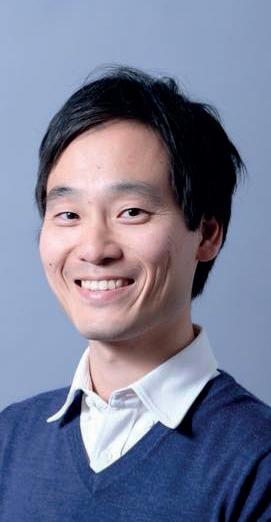
However, this digital marketing theory is no longer effective in spite of the amount of money being invested in compared to the golden age of digital marketing that we have made a promotional channel portfolio and just adjusted the better route to access consumers every day.
Essential value of the brand is becoming richer than acquiring more followers and artificial engagement rates on the dashboard. Every company should have responsibility with their own consumer data in the age of “first party”, and it does not mean for Big tech companies, but also your company should act for the privacy is primary matter.
The data is oil, yes, it must be oil to create new innovation, but oil should be extracted carefully and with safety facilities for the staff and stakeholders, otherwise it will cause unintentional issues with your business and concede the loss with trusted value and long-term relationships with consumers. I think the data is the same with oil. It is time to consider the safety of the Internet.

Shyamal Kumar, Co-Founder & CEO of Lavelle Networks, is a software engineer turned entrepreneur with over 18 years of experience in the data networking space. He is passionate about embracing SDN and cloud technologies to bring simplicity and performance to data networks.
Over the years, Shyamal has donned numerous hats of a software product leader, CEO and entrepreneur and continues to excel
in all of them. His success story is indeed an inspiration to many.
Shyamal graduated from BITS, Pilani, one of India's best engineering institutes. For him, those were some of the most remarkable days that transformed him as a person. Shyamal had the freedom to choose his curriculum, schedules, and coursework, in addition to the opportunities to participate in the widest
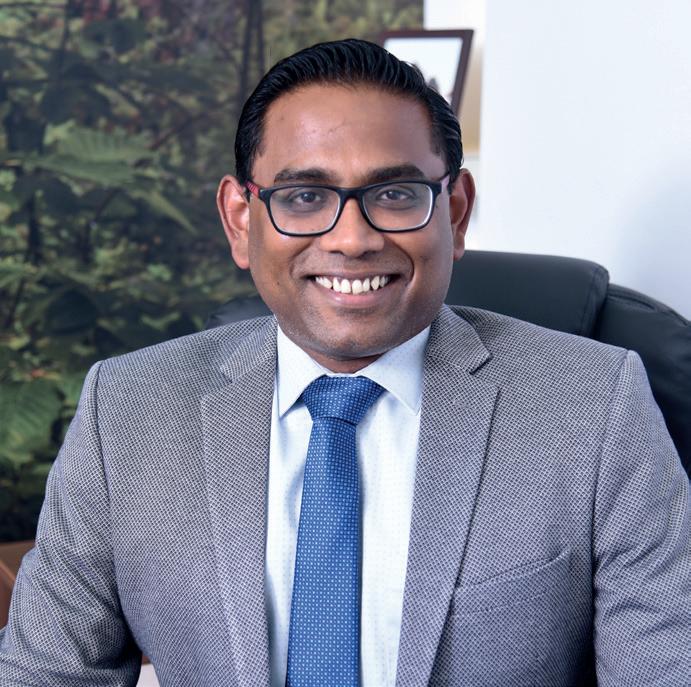
The passion for building great software and solving problems in modern internet communication were two things that brought me to this field
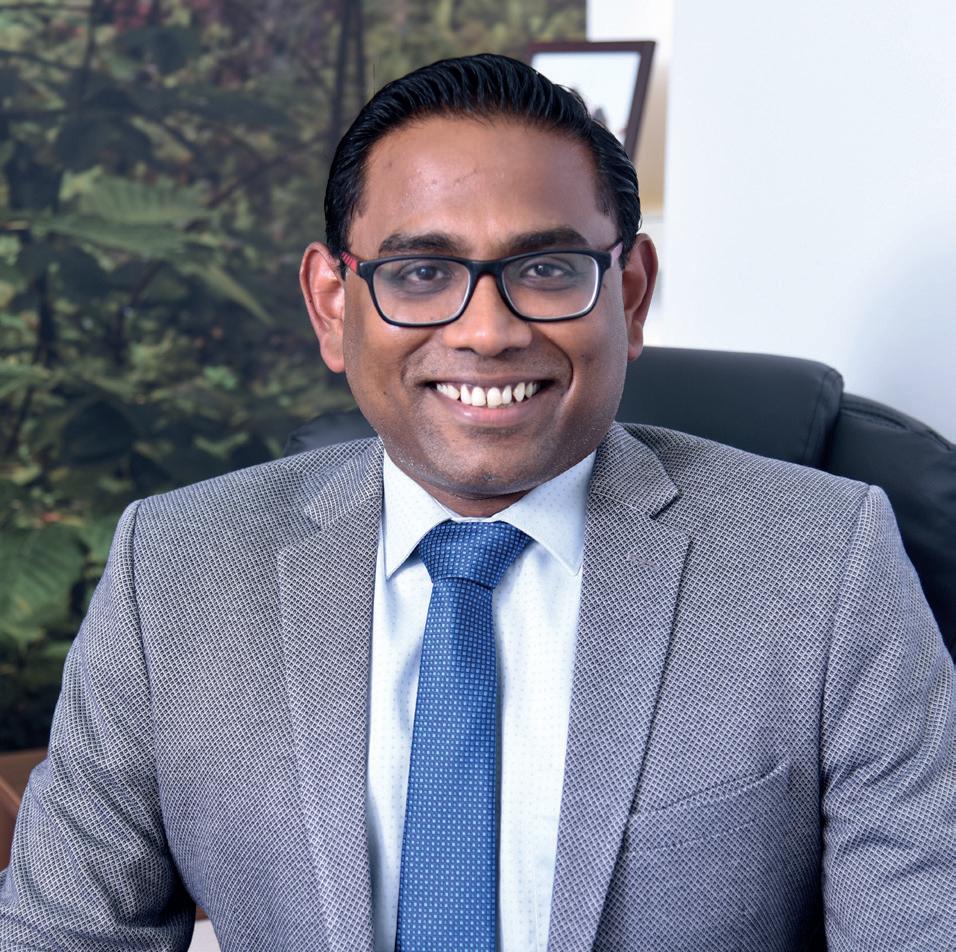
variety of inter-varsity programs. “I also got excellent leadership training opportunities at school and college, and that helped me when I started to work as a software product leader,” mentions Shyamal.
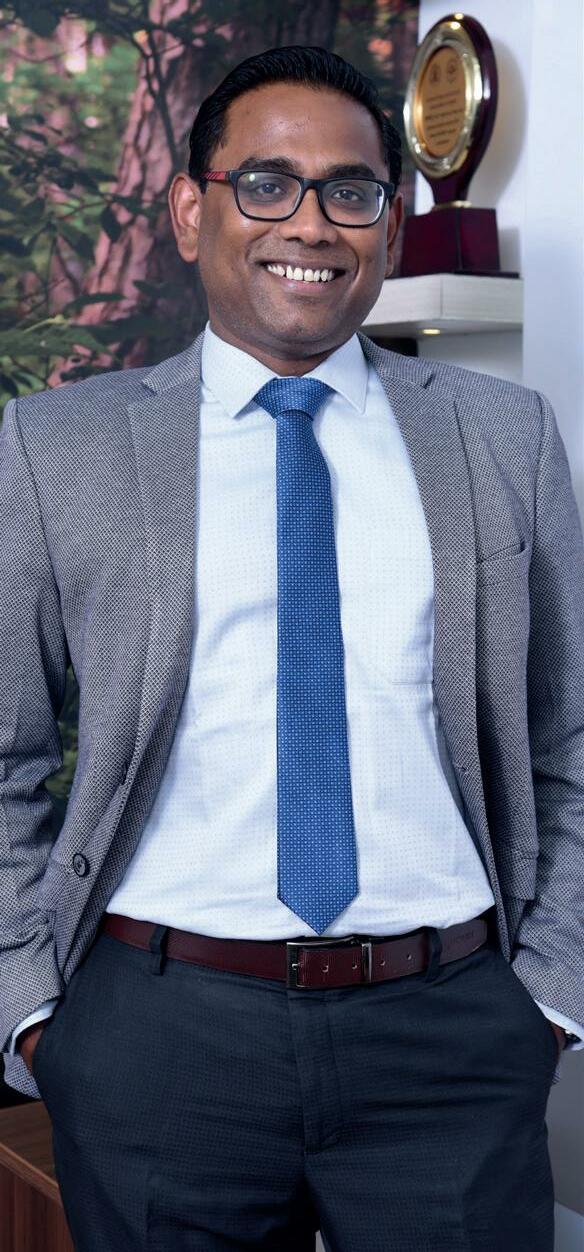
Most importantly, Shyamal learned from his foundational years that people are inherently interested in contributing to a cause as long as they can get the right leadership. At its core, leadership is about driving change to make this world a better place. “Whether you are building a team, a product or a company – you are driving change, and you need to compel your customers, investors, and team members into believing in the change,” shares Shyamal.
Shyamal was preparing to do an MBA after engineering. However, as part of the degree program, he interned at a networking software company. After that, he was hooked on software engineering and never looked back. “The passion for building great software and solving problems in modern internet communication were two things that brought me to this field,” reveals Shyamal. He then worked with leading companies such as Tata Elxsi, Juniper Networks, Inkra Networks, Telsima Communications, Riverstone Networks, NetContinuum, and Versa Networks.
In his current role as the Co-Founder & CEO of Lavelle Networks, Shyamal is spearheading his team to bring SD-WAN products that solve the biggest challenges in the WAN for distributed enterprises. “The desire to excel from learning and growing is the fundamental seed for success
Lavelle Networks offers network-as-a-service, where its software seamlessly manages, optimises, and secures the customer networks across their branch offices, data centres and cloud locations
in this role,” says Shyamal. “I have seen all areas of my life – spiritual, personal, social and professional –changing significantly because of my experience of building the company.”
In 2015, Shyamal and his co-founding team witnessed massive growth in public cloud services in enterprises. They felt that a substantial underserved need in enterprise networks connecting to the cloud would open up opportunities for challengers like them to ride the tailwinds of the market inflexion point, which they now call SD-WAN. Taking inspiration from the Café Coffee Day on Lavelle Road, in the heart of Bangalore, which they visited frequently, Shyamal and his co-founding team decided to name their company—Lavelle Networks.
“We built our software on the cloud, way ahead of our industry peers, and today that has made us the best multi-cloud solution for SDWAN,” reveals the proud Co-Founder & CEO of the company.
Lavelle Networks offers network-as-a-service, where its software seamlessly manages, optimises, and secures the customer networks across their branch offices, data centres and cloud locations. Moreover, customers can interface with the team of Lavelle Networks by using standard help desk tools rather than spending their time on enterprise network configurations, tools, and troubleshooting. “We let the customer focus on their core
business applications, leaving their networks to us to manage for them using our cloud,” asserts Shyamal.
Therefore, together with high calibre technology, brilliant networking software, and exceptional customer experience, Lavelle Networks stands out and delivers the best enterprise network experience for every user, device, application, or cloud.
Lavelle Networks won its first 10 customers between 2017 – 2018, within a year of launching its beta software version, which is an incredible feat achieved since enterprises rarely adopt young products immediately. “We realised we were at the cusp of disrupting the enterprise network services market and accelerated our growth by raising capital from investors like Ideaspring Capital, YourNest, KAAJ Ventures, ASM Technologies, and other business partners, and raced away to 100+ customers from 2019 – 2021, despite the COVID slowdown,” reveals Shyamal. He further says that the company’s revenue has grown more than 10X in the last few years, thereby emerging as one of the Top 3 solutions in the market.

Today, leading global enterprise brands in retail, eCommerce, insurance, financial institutions, government networks, law and order, manufacturing, and healthcare are using Lavelle Networks SD-WAN Platform for upgrading their infrastructure to next-generation WAN and Hybrid WAN Solutions. For Shyamal and his co-founding team, it has been an exhilarating experience to see the growth and acceptance of their products by enterprise customers across the nation.
Today, leading global enterprise brands in retail, eCommerce, insurance, financial institutions, government networks, law and order, manufacturing, and healthcare are using Lavelle Networks SD-WAN Platform for upgrading their infrastructure to next-generation WAN and Hybrid WAN Solutions
As a young start-up, there are innumerable demands on the product from every quarter –sales, engineers, customers, and investors. But caught in the middle are the entrepreneurs who have to decide what’s correct and essential for their product and then focus on those decisions. Therefore, Shyamal feels that the most significant challenge for start-up entrepreneurs is building the skill to focus on what matters and learning to let the rest take its course.
“The way to overcome these challenges is to have a balanced method of prioritising between
the demands on your attention and then giving a lot of your energy towards a few chosen priorities,” reveals Shyamal. “It takes discipline to say no effectively and staying focused on the long-term vision while making the necessary choices for the near-term pressures.”
According to Shyamal, technology investments need to balance the needs for revenue growth, customer satisfaction, engineering success, keeping total cost of ownership economical, and rock-solid product security. He further explains,

“At times, the business might need more focus on revenue growth and product security –those are pressing demands that are seasonal at times, urgent at times, and constant at times. However, by picking open-source software without diligence, you must balance all areas of the product so that you are not building too much technical debt causing instabilities or leaving too many vulnerabilities.” Therefore, he calls building world-class software with reasonable investments an art and science.
From a leader’s perspective, Shyamal feels that empowering team members to solve the key challenges facing customers is the right way to motivate an organisation. He further adds, “We exist to serve customers and building this into our company's culture is key to success in today’s red ocean markets of hypercompetitiveness.”
Moreover, it is also imperative to have clear and consistent communication with the team to be aware of changing priorities, needs, and market demands. When everyone is empowered to act and resolve the priorities and given constant, precise, and regular feedback on how their work is making a difference –it always motivates people to give their best. “More than money or resources – the key driver for human performance is ownership of the goal that you are chasing,” shares Shyamal.
The first milestone for Shyamal and his team was locking Lavelle Networks' first 10 customers. This was followed by finding the
right investors for the company who would support their vision for growth and then back to finding more customers. “We have done this very well, and with a growing customer base of 100+ customers, we are set to gain the top spot in our space – SD-WAN in our home market –India,” mentions Shyamal.
A Typical Day in the Life of an Entrepreneur Being an early riser, Shyamal gets a head start on the day for communicating or processing task lists without the pressure of constant communication. Most of his time also goes towards finalising priorities in the near term while checking the preferences and the resources or plans to execute those priorities.
“I am always strong in my faith, which helps me stay grounded and humble,” shares Shyamal. However, sometimes he gets stressed under pressure but is agile in nature. He quickly reflects, learns, and gets back on track. Shyamal’s perfect idea to unwind and unplug from work is to spend time with his family and read up on topics he is trying to understand, learn, and excel at.
Lavelle Networks is racing towards its next 10X growth, with customers backing the company all the way. In February 2022, Airtel invested in Lavelle Networks and also formed a global partnership which is an unprecedented testimony to the ability of its team, technology, and the depth of its Founders' vision. “We plan to continue our laser focus on world-class software and using that bedrock to migrate into higher and higher stratospheres in enterprise networking,” concludes Shyamal.

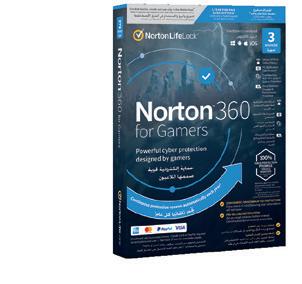

Prejith P Pillai is the Founder and CEO of Xploro Technologies Inc. A software development company he founded in 2007 and now serves globally for various prestigious customers. He is an information technology architect and started his career as a software engineer in his own firm. He has 15+ experience in designing the architecture for any complex application out there. Known for his breakthrough technological ideas, also an inspiration for young entrepreneurs and has been guest speaker on entrepreneurship in various institutions like NIIT University, GL Bajaj Institute of Management etc.
Data Science and Farming? What is the relation between them? It is the first reaction when someone hears about this combination. Well, there is a big role of Data in every aspect of our day-to-day life. Let's first talk about Vertical Farming. Considering the population going up around the globe it is hard to feed them all as per current agriculture method. Vertical farming is an indoor technique to grow plants for agriculture. It uses LEDs instead of sunlight. This type of farming can be done right in the urban area or city which actually decreases the need of transportation and supply chain cost. It saves the water as the irrigation is a closed-circuit technique, it will only use water which actually plants need and rest is recycled again for the future of the same farm. We may be having water scarcity in the coming decades and vertical farming will give a good help in this area.
Various terrains where farming is not possible due to climatic conditions like desert or snow areas or even rocky places. This kind of facility will be a blessing for them to produce their food without depending on others. Irrespective of climate you can grow any product anywhere. The best part is you don't need any pesticide as it is indoor, now I don't need to mention how awesome it is if you are getting pesticide free organic vegetables or fruits. Anyhow few limitations are there like the cost of electricity, led lights, are few other things, on which experts are working on to keep it economical. Presently, leafy vegetables, few fruits like strawberries, maples and salad-oriented vegetables are more in trend of this kind of farming. It is not an alternate solution for the regular farming obviously as we have limitations for the vertical farming. But the technique is evolving day by day and we can expect magical things in future.
Now talking about the role of data science in Vertical Farming is huge. When we talk about the three pillars, Engineering - The way you recreate or engineer the environment desirable for the planted crops, The Plant Science and The Data Science. Enormous amount of data we are getting from vertical farming is like environmental data from various sensors, images of plants from cameras in different stages to analyze the quality of the crop. The water specific data we provide to the plants like PH level etc. The manual data people acquire in the process of farming. The data we get is heterogeneous, tabular data, images, videos and more. Computer vision is one aspect of image data. Let's say a computer is monitoring a plant in various stages used by technique “x” of farming and comparing it with technique “y” will give you a clear comparison of the quality output. Making these studies as a repository will give you a dictionary for quality analysis of the
production output. To do this deep learning of data, creative houses are now developing a bunch of algorithms and they are really improving it day by day by the experience they are gaining. The vision study is using RGB cameras and also hyperspectral cameras which are far beyond the human eyes and can even check the chlorophyll in the plants. This helps in the study of ageing of plants, stress of the plants etc.
The environmental data can help create various case studies over the plants by maintaining different measurements of water temperature, humidity level, light exposure, mineral quantity etc. This can be helpful in the future to choose the correct method to get better production in various environments. These are kind of prediction reports which will be a treasure for our future farming. Some of the things used in the vertical farming to gather this data are IoT Sensors, cloudbased storage of this data, cameras (RGB/depth/
The environmental data can help create various case studies over the plants by maintaining different measurements of water temperature, humidity level, light exposure, mineral quantity etc
multispectral/hyperspectral). Various software apps are developed to connect with the hardware to populate and structure the data coming from the same. Dashboards and reports made in several technologies to provide the data in a representative format for better analysis. If we talk about cloud storage the services like Google Cloud, AWS, Azure are the best reliable and suitable mechanism to help with SQL databases for the storage options. Python is widely used for the data processing and presentation layers that can be built in languages like React, . NET, PHP, etc.
So, I think we need more startups and creative minds to contribute more towards agriculture using technology and data science. They can start from anywhere, let say develop a versatile presentation platform to showcase the data in various graphics-oriented ways. Focus on the possibilities of hardware we can indulge in vertical farming and create a prototype for research and development. An awesome middleware which can connect with various points of data connection and can process the chunks of them into meaningful format to make it ready to consume for existing presentation layers.
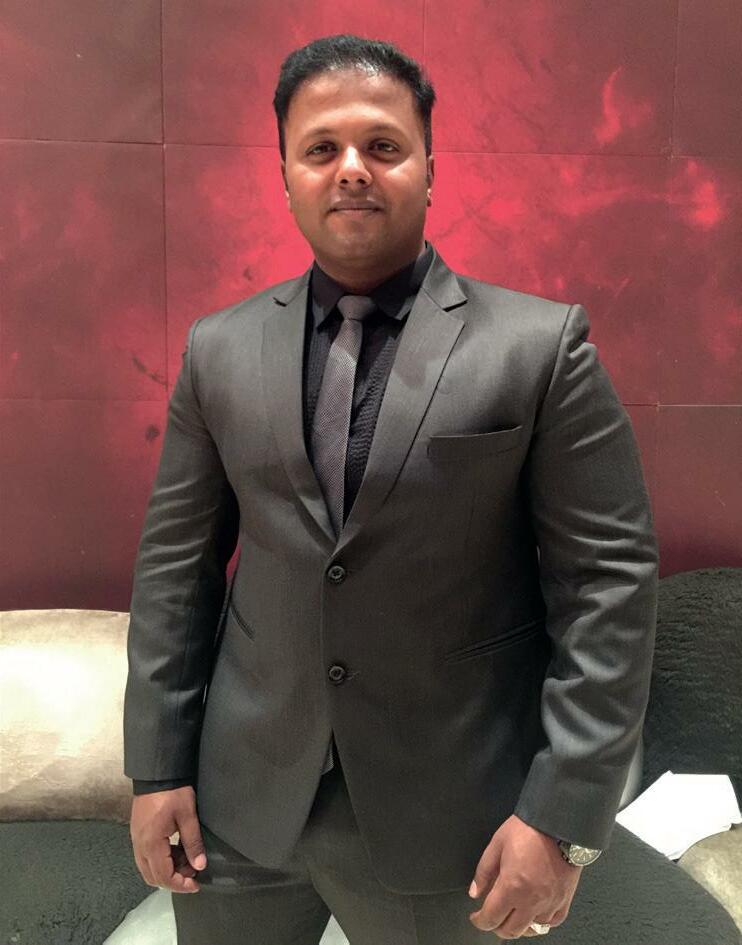
Renée Benatar, Founder & Creator, Hampers Bazaar
Renée Benatar is the Founder and Creator of Hampers Bazaar. Choosing to start a business in the middle of the Global Pandemic, Covid-19 is not something many people did while being confined to lockdown. This however was not going to stop Renée from following her vision. Renée always dreamed of running her own business and through much exposure to the business world and coming from an exceptional family finally led her to founding and creating Hampers Bazaar. At Hampers Bazaar, they specialise in creating luxury customised, bespoke hampers, food and gift baskets to suit every arena both professional and personal with a rare combination of all things exquisite and glamorous and then shipping them worldwide.
Creating a start-up, is never an easy endeavour and it all begins with an idea, a vision and it requires strong leadership skills, fortitude, discipline, and courage.
Every element and detail must be executed with the utmost precision to ensure the product and your services provided are not only the
very best there is on offer, but also that we have something more to offer than anyone else. This is your unique selling point, and it is always the business Modus Operandi for your new venture.
I have always believed in having a vision for a future of success and growth and keeping a very open mind.
Hampers have always been synonymous with Royalty, and the upper classes, who have been large consumers of the Great British Hamper

As an entrepreneur, you are working all different hours of the day and night and weekends too and this requires a special person with loads of courage, stamina, and self-belief.

The Hamper market in the UK is well known as it is a classical concept that has been a very
I decided to take a much-loved British hamper and recreate it by putting an unusual and personal spin on it. I felt that the concept of a beautiful hamper was not enough, because in my view the quality of the products needs to match the quality of the hamper itself.
I did not want to reproduce something that already exists, and my aim was to create something different as I felt that half filling a hamper with shredded straw or tissue was not good enough for the recipient and certainly not
Our hampers are lined, and we fill the hampers to the brim with the finest quality products sourced from all over Europe. These products often are limited editions or have won awards and this creates a delight, an array of wonderful things, to open, unpack and consume with each one tasting divine and
Hampers have always been synonymous with Royalty, and the upper classes, who have been large consumers of the Great British Hamper. This has, over time, filtered down into our supermarket variety... and of course, now, we have customised and bespoke unique hampers which is what we are all about.
Throughout the rest of the world hampers are not as commonplace as they are in the UK and
there is an opportunity to deliver this experience to everyone as we ship our hampers worldwide. This being observed, there is most definitely a thirst for our overseas clients to acquire or gift something very “British”. There is definitely a gap in the market for something very personal handwritten and customised with all the ingredients and qualities that “Luxury” brings to mind.
Hampers are known as food baskets in the USA and there is nothing available there that comes anywhere close to what our hamper business has to offer.
There is also a market for clients who have had various hampers, and gifts and are looking for something “unique///’ and different so when their gift is received it’s definitely not one of many. It’s one of a kind and this is because I take the time to speak with each client and discuss their requirements with them, who the hampers are for, what the occasion is and what are the tastes, the likes and dislikes of the recipient and so this is how we make it personal, this level of communication and understanding of whom we are working with and what their requirements are given us the tools to make each hamper unique one of a kind.
The possibilities are endless regarding elements for a truly bespoke hamper and we add particular gifts into our hampers that are super personalised, sometimes books, cocktail shakers or scented candles amongst other things.
It's important that once you are making a gift, you should make it count and this is where we come in, and make it extra special with thought and personal touches as we take care of the entire gifting process from writing your notes to delivery and every aspect of this beautiful gift is covered by us.
These gorgeous hampers are not only one of a kind, but they exude an air of the utmost elegance. Whilst still being contemporary and relevant
One thing I know is that when clients keep returning and referring you and when offers of financing and buying into your business come flooding through your inbox you know that what you are doing is not only innovative... it is something very special.
For me personally, I feel incredibly grateful that I love my work, I love the challenges of everyday being different and having to use my creative mind in order to achieve my goals, in fact I’m passionate about it and look forward to every day which I know not everyone is fortunate enough to do.
I am passionate about creativity; I love to design something new and different, putting a completely different spin on something classic and expected, while respecting the integrity of the original concept. I adore finding the unexpected, and I like to challenge myself and I love to push boundaries sometimes breaking the rules, as I believe, in creativity, there are no rules as a true artist has that creative license.
There is also a versatility that allows me to be creative, from designing hampers to creating social media posts, setting up photo shoots and working out how I’m going to package new items I source and find for my clients and their hampers and of course dealing with clients and taking their orders.
It goes without saying that I am very detail oriented, I see and notice the smallest things and this I feel is the essence of a high luxury original brand which sets a business apart from any others in the Hamper business sector.
Our Hampers are not only a luxurious treat, but they are a lifestyle and are synonymous with all things of great beauty and of individuality and originality. This is evident to everyone who receives a hamper from us.
These gorgeous hampers are not only one of a kind, but they exude an air of the utmost elegance. Whilst still being contemporary and relevant.
Researching the Market before starting the process of creating my hamper business was a long and exhaustive procedure as it is vital to know everything you can possibly find out about the industry... and then some.
The research doesn’t end there, because I am constantly researching new products for new hampers and specific clients with particular requirements. Each and every product I select to curate each hamper needs to be tried and tested to ensure that the taste and quality is the very best that is available. Sometimes, I’m searching for an unusual type of biscuit... and I find an incredible chocolate that I want instead.
Our products are not your supermarket variety, clearly, and some of our products are imported from different parts of Europe. This leads to the issue of Brexit which has been challenging to say the least and shipping into and out of the UK is not as straightforward as it used to be, it’s a challenge we have risen to find the right solutions for our clientele.
One of my favourite mantras is, “Where there is a will there is a way!” and, as such, we are delighted that we do indeed offer international shipping.
I hope that you can feel the love and passion in what I create, and this is what we are all about, they are hand made with love and I like to think it’s easy to tell that I put my heart and soul into each one!

